- Excellent quality and tech-filled interior
- Keen driving dynamics
- Long list of standard equipment, especially safety tech
- Mild hybrid drivetrain brings little benefit
- Rear seat and boot are tight
- Short 10,000km service intervals
Another year, another booming time for small SUV sales. With over 20,500 sold so far this year in Australia – only just under 400 units less than 2021, despite tough sock levels – it’s clear that they’re in vogue with buyers. Impressively for Mazda, the second-best selling model of the breed is the Mazda CX-30. Buyers are clearly impressed with its combination of sultry styling, long equipment lists and luxurious interior finishes. So is the CX-30 story as positive as it was when it first came out? We tested the 2022 Mazda CX-30 G20e Evolve to find out.
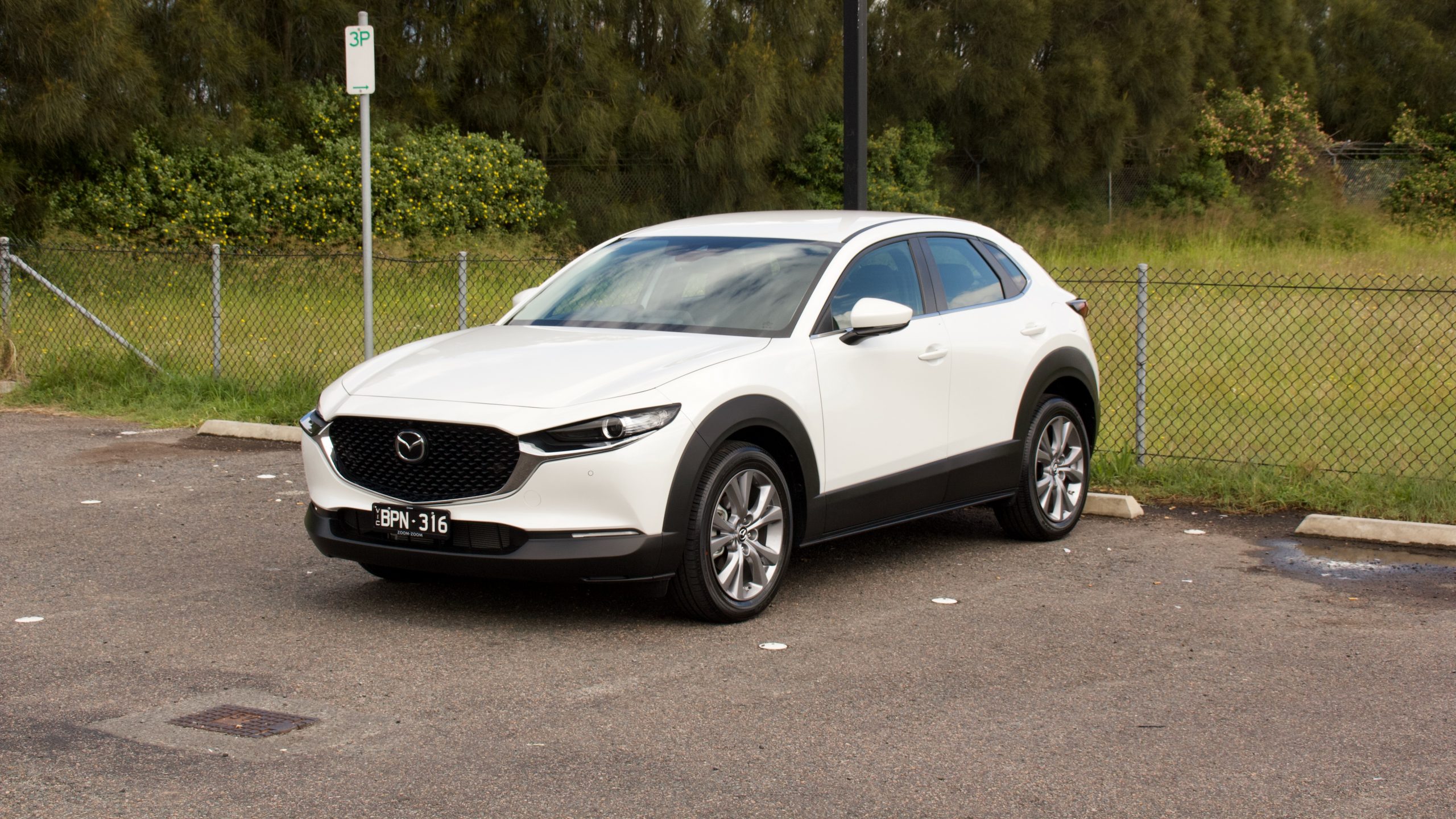
We were slightly confused by the CX-30 lineup upon its release and now there are even more variants to choose from. We tested the latest of the bunch, which adds a new mild-hybrid drivetrain to the mid-spec Evolve for the ’G20e M Hybrid’ name.
Price & Equipment: 8/10
While the CX-30 starts at $29,390 plus on-road costs (from around $34,000 drive away), the new G20e variant of the second-from-bottom Evolve, is priced at $35,840 plus on-road costs (around $40,000 drive away) – the G20e includes the $1,500 Vision Pack that’s optional on the regular Evolve.
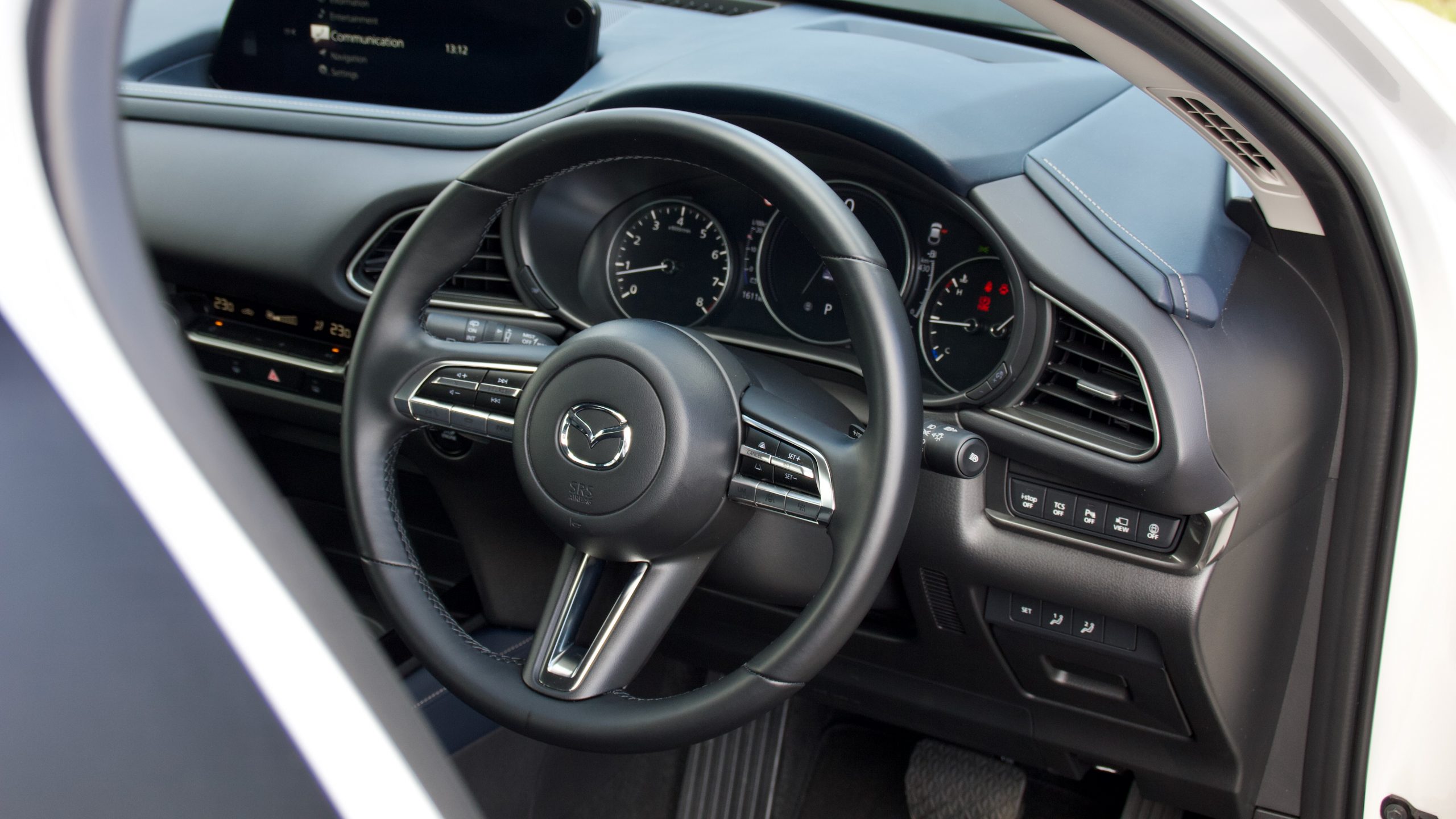
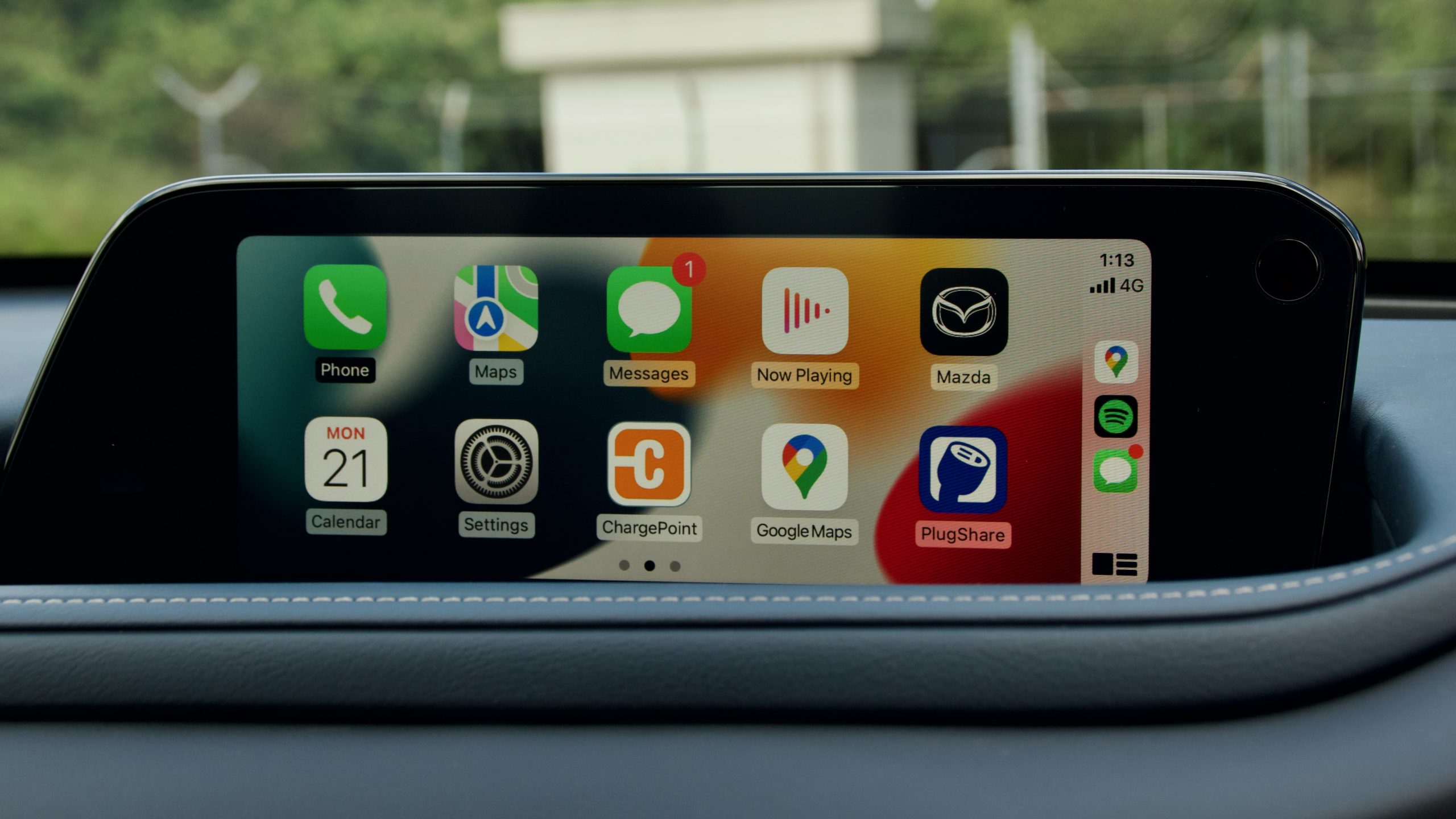
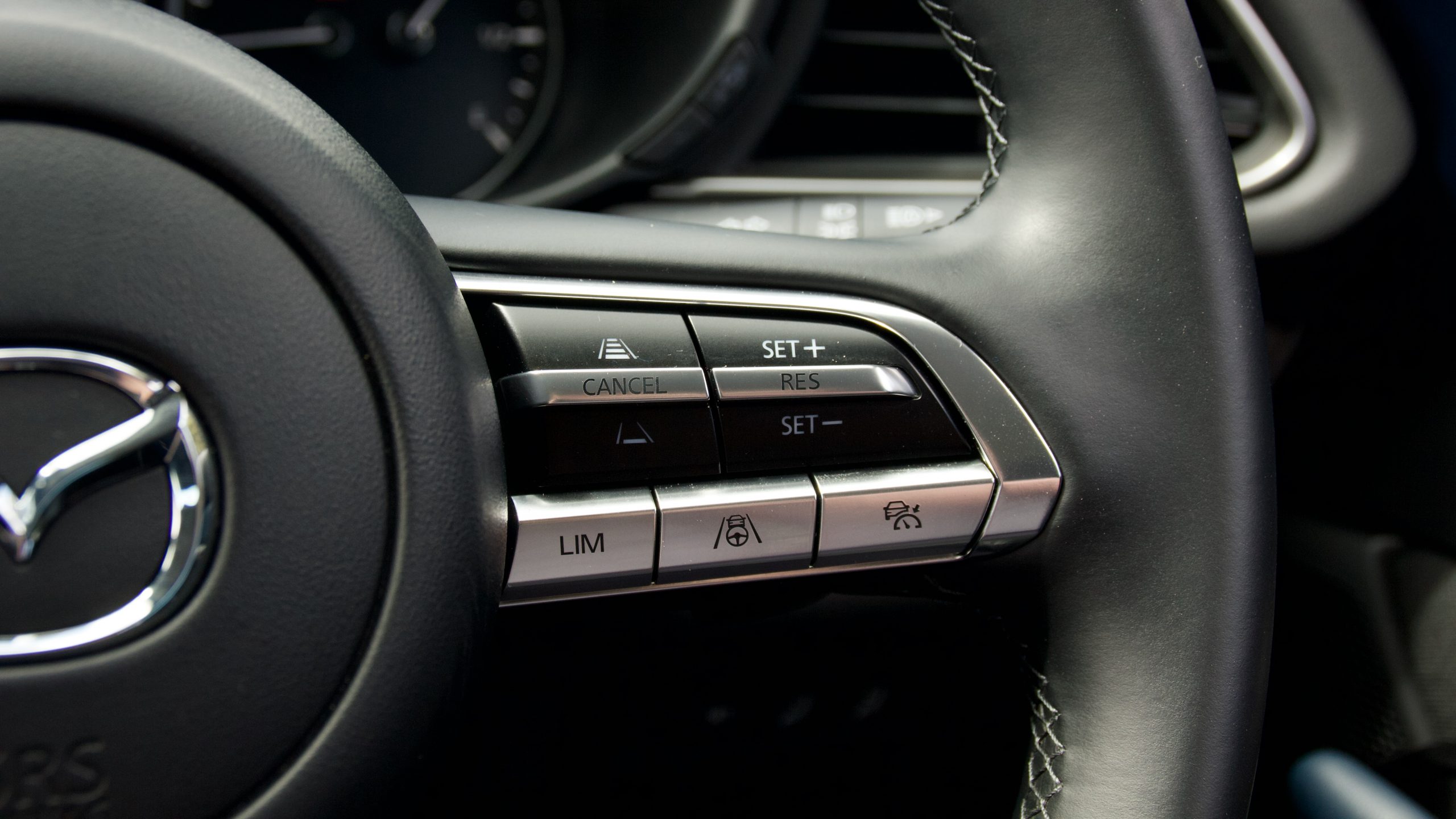
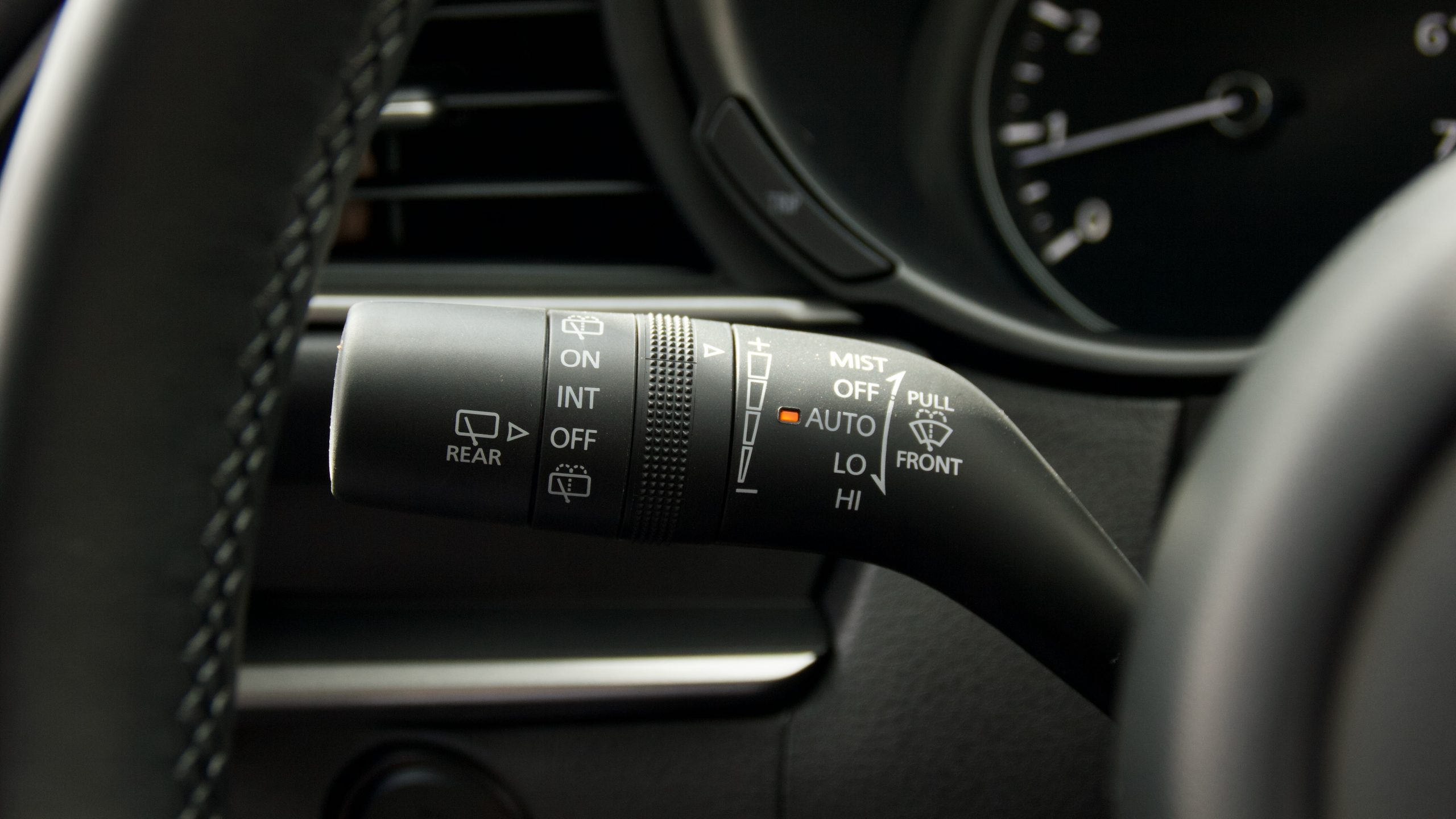
Standard kit on the G20e Evolve includes 18-inch wheels, all-LED lighting (with dated halogen daytime running lights), auto lights and wipers, cloth upholstery, a 10-way electrically adjustable driver’s seat with memory functionality, dual-zone climate control with rear vents, keyless entry and start, auto-folding/auto-dimming/auto-dropping when parking mirrors, an 8.8-inch infotainment system with wired Apple CarPlay and Android Auto, satellite navigation, digital radio, an eight-speaker sound system, a 7.0-inch digital driver’s display and a leather steering wheel with paddle shifters.
Safety kit includes seven airbags, auto emergency braking (AEB) with pedestrian and cyclist detection, rear auto braking, lane departure warning with lane keep assist, adaptive cruise control with stop and go functionality, blind-spot monitoring with rear cross-traffic alert (with braking), auto high beam, driver attention alert, speed sign recognition, rear parking sensors, a heads-up display, tyre pressure monitoring and the contents of the usually-optional Vision Technology package: extended driver monitoring, a 360-degree camera, front-cross traffic alert, lane trace assist and front parking sensors.
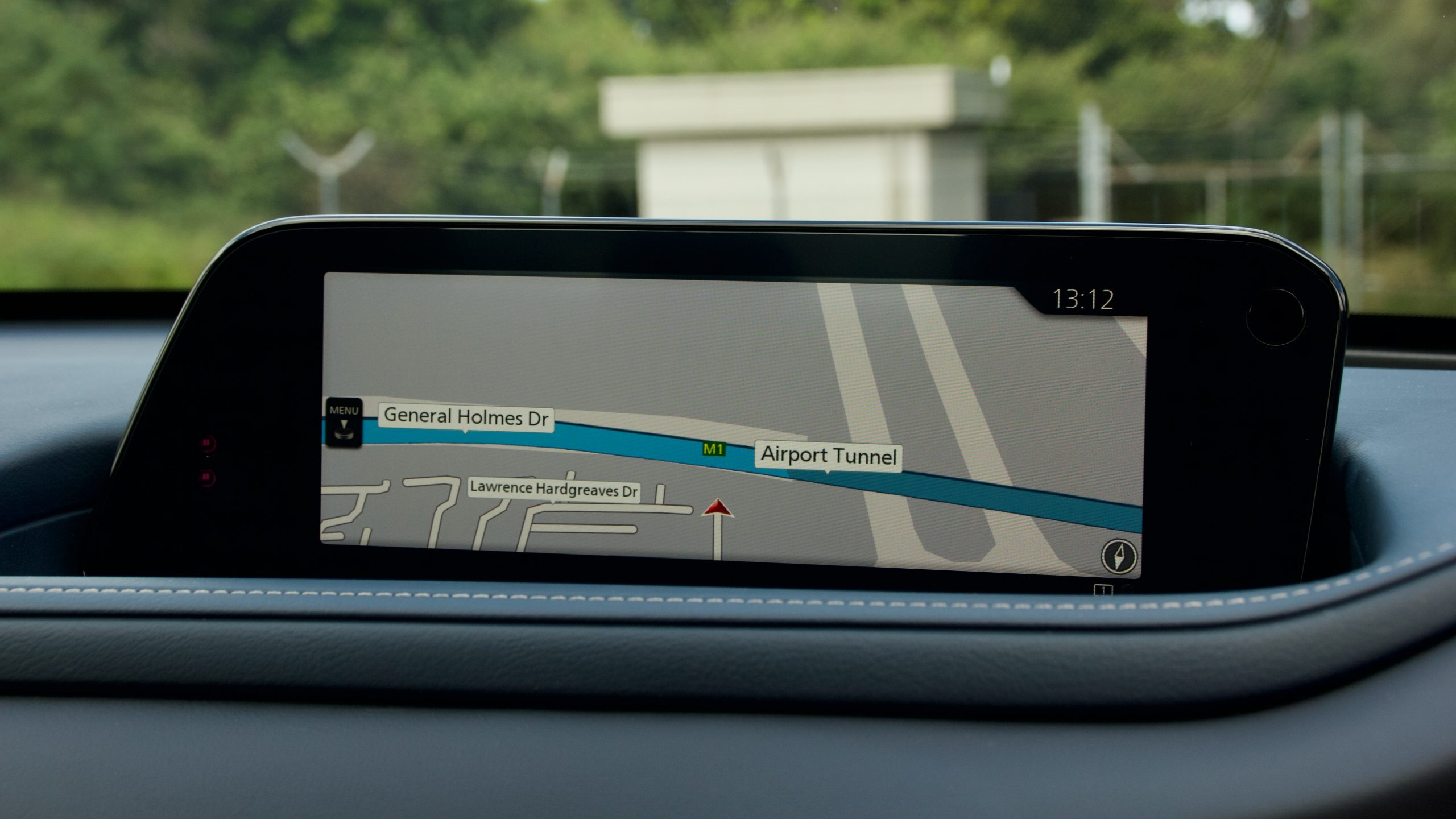
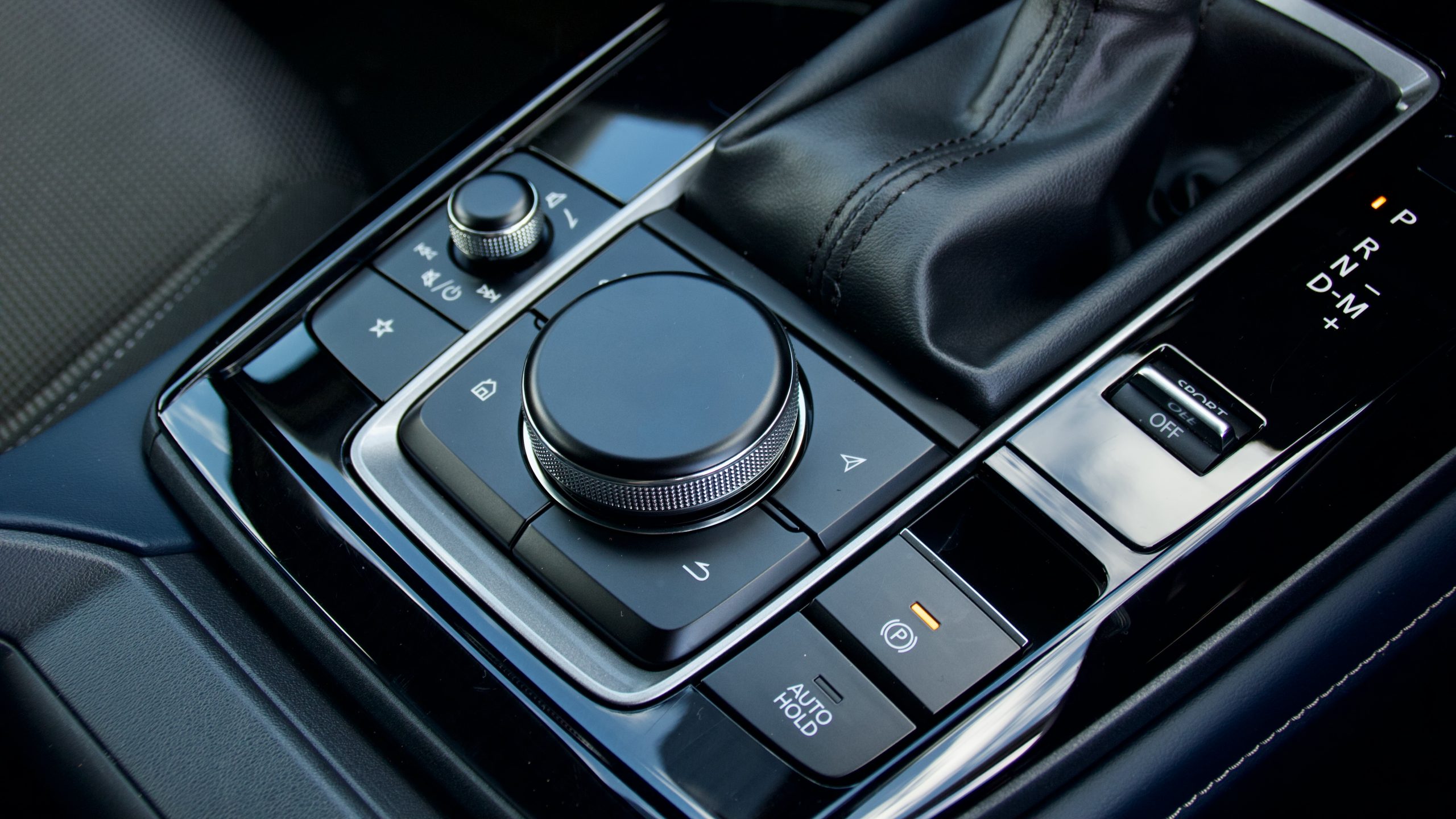
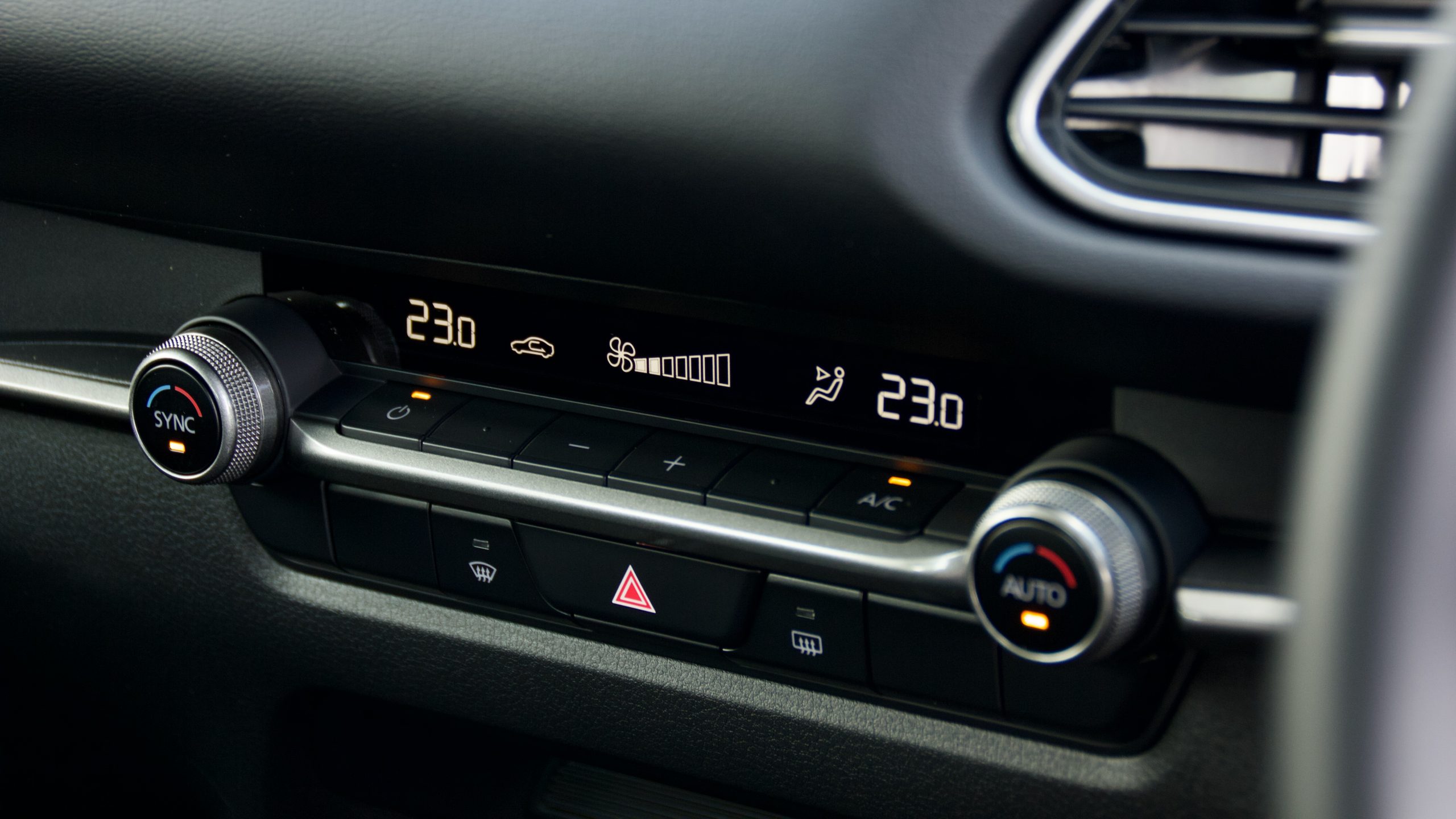
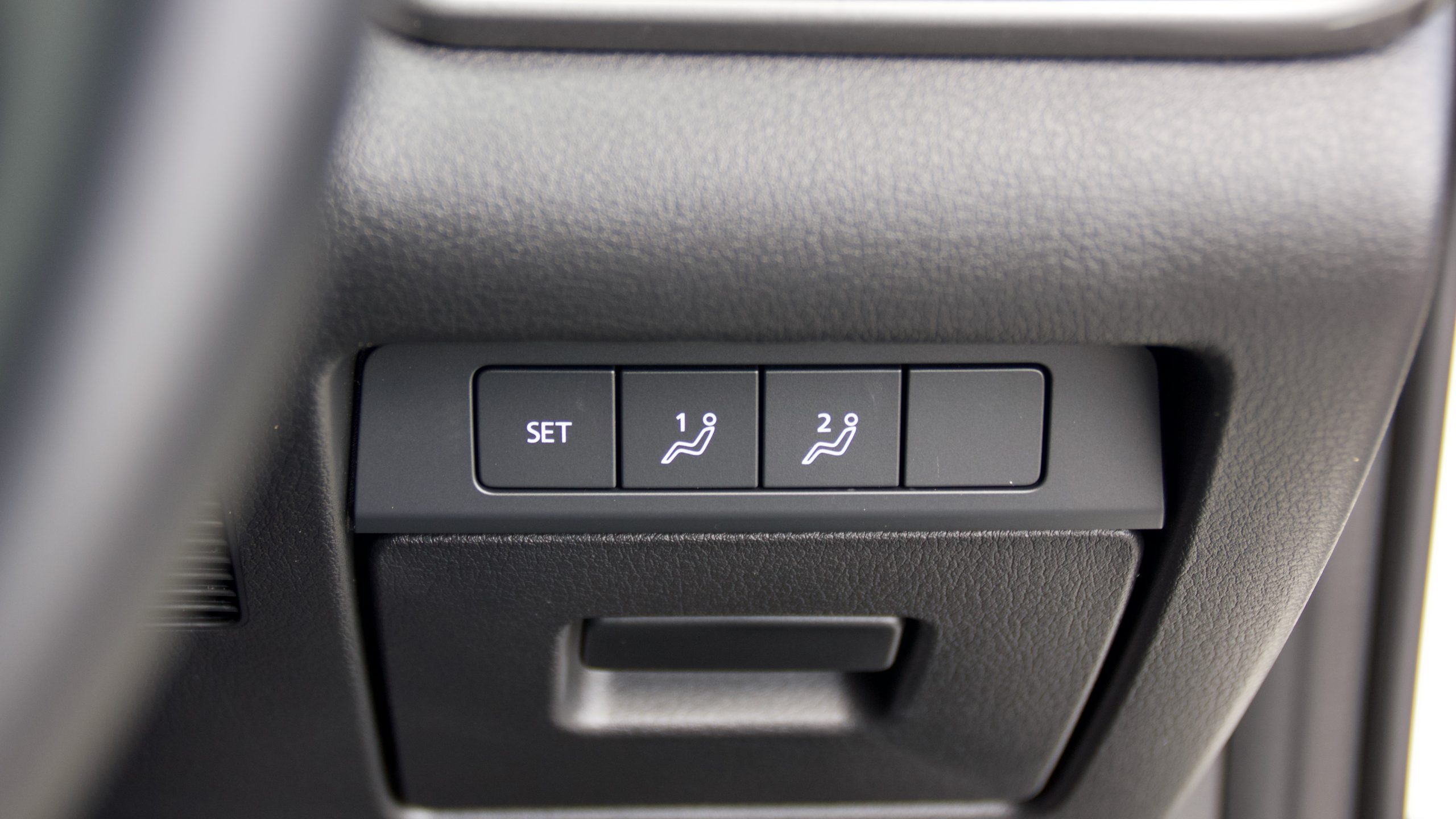
In terms of colour options, the CX-30 is available in our test car’s ‘Snowflake White Pearl’, ‘Deep Crystal Blue’, ‘Jet Black’, ‘Sonic Silver’, ‘Platinum Quartz’ for no extra cost, while for $495 extra, you can choose ‘Soul Red Crystal’, ‘ Polymetal Grey’ and ‘Machine Grey’. The sole interior option is black and grey cloth with blue dashboard and centre console trimmings.
Chief competitors to the CX-30 are the Hyundai Kona Elite (around $36,000 drive away), Toyota C-HR Koba (around $40,000 drive away) and Kia Seltos Sport+ (around $37,000 drive away). The Kona is comfortably the smallest of these four cars, the Toyota has the most luxury features like leather upholstery and the Seltos is definitely the most practical. The Mazda looks expensive in comparison, but its safety equipment comfortably outshines those rivals, especially with the Vision Technology package.
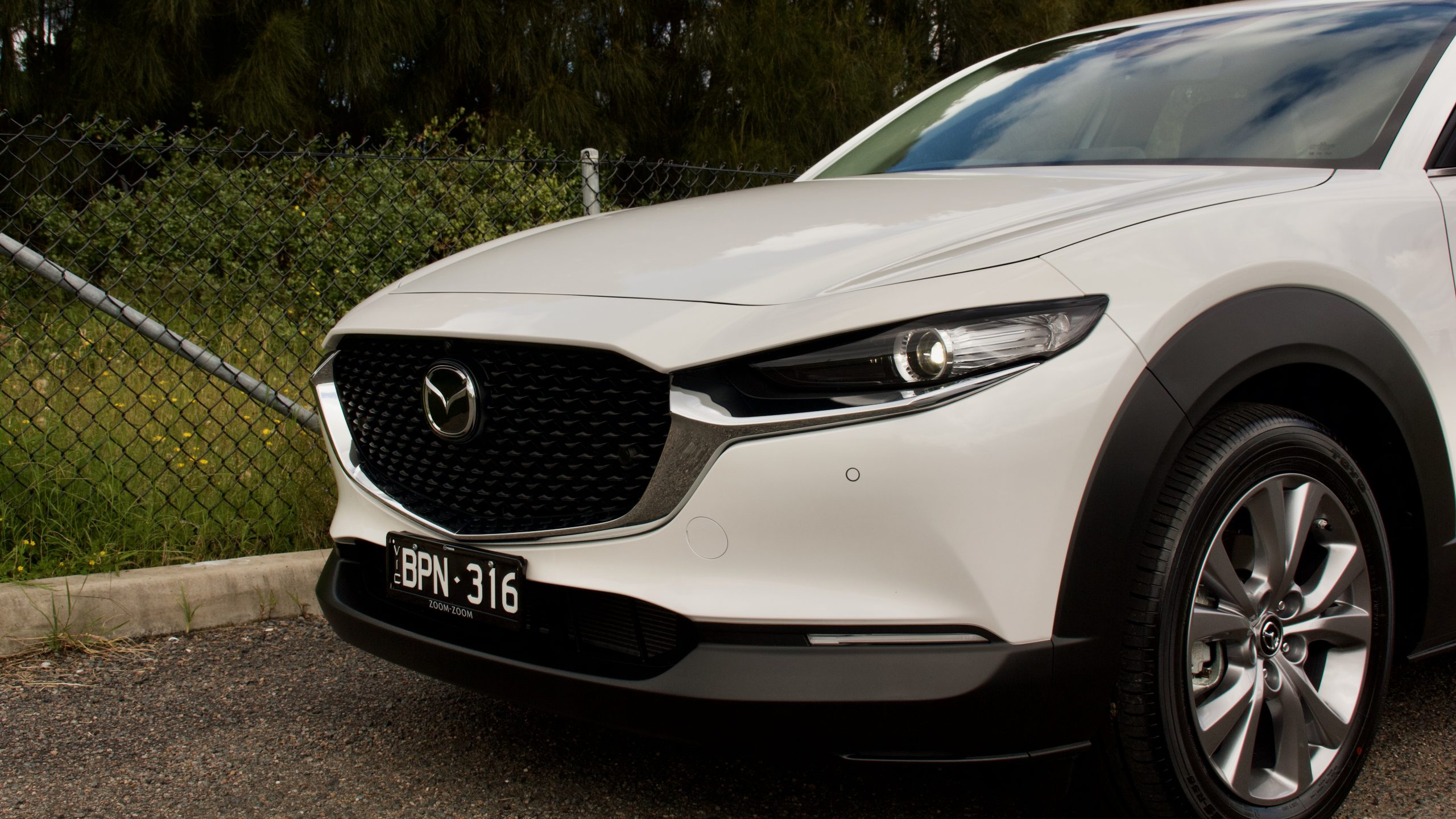
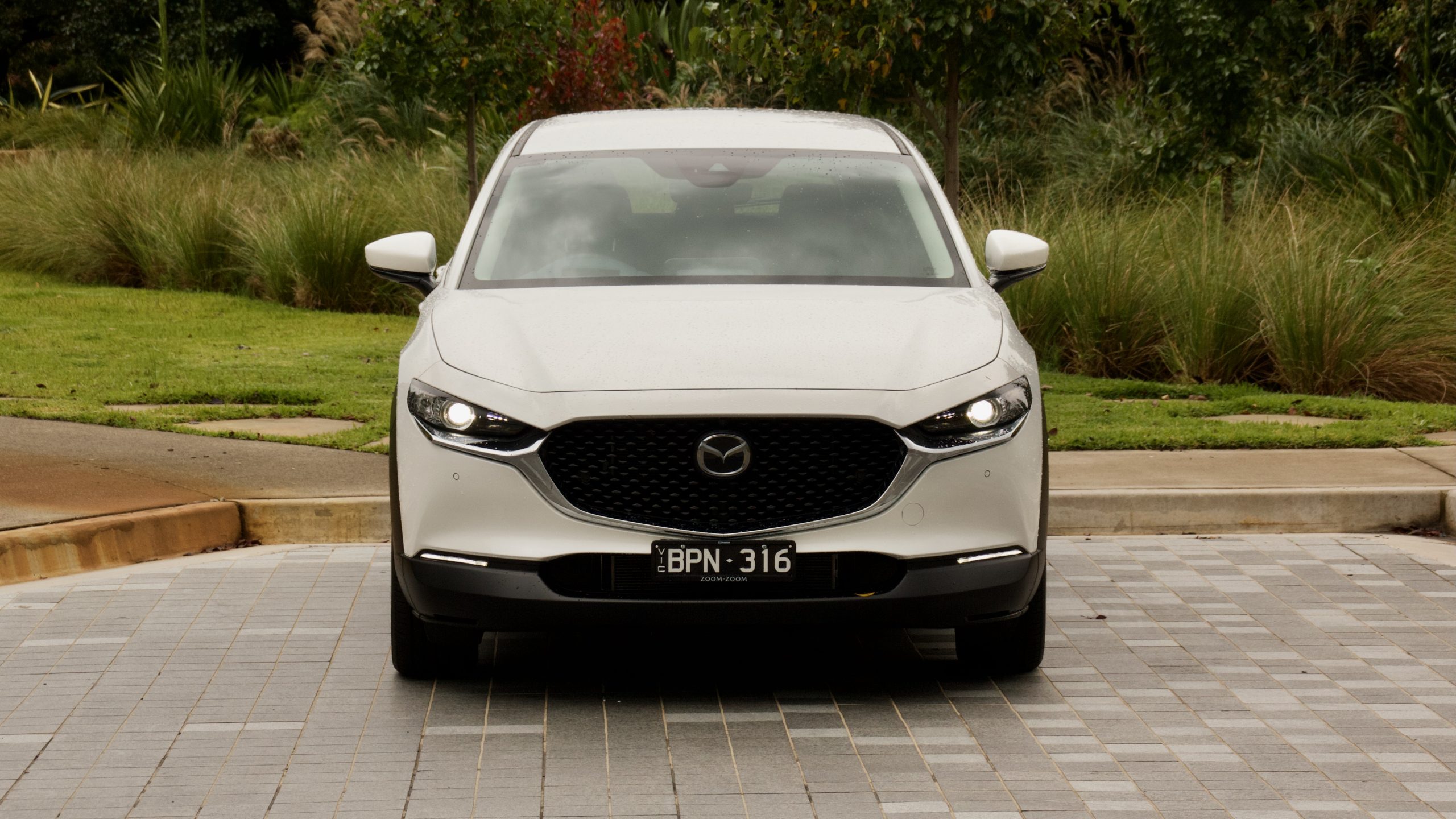
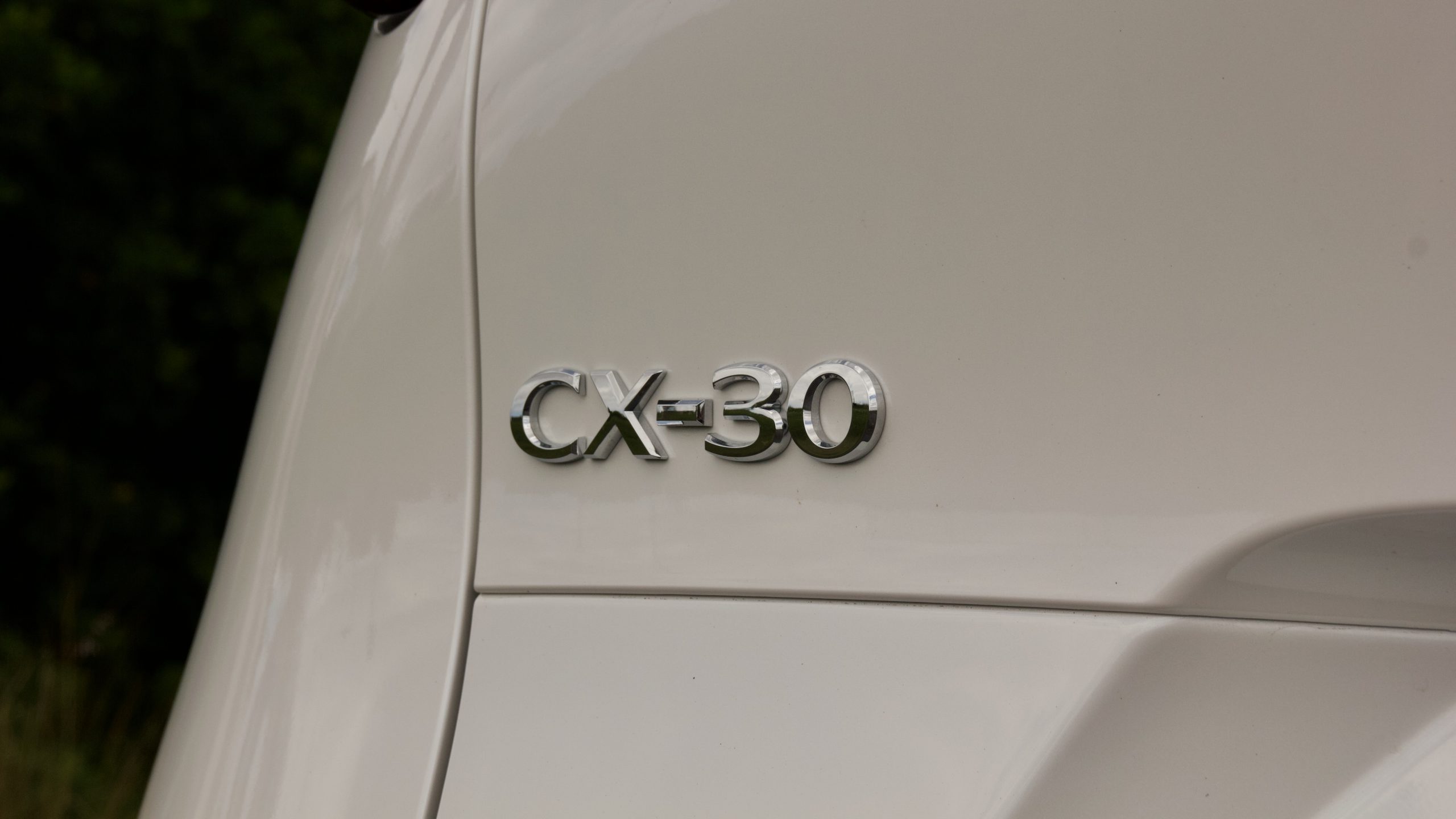
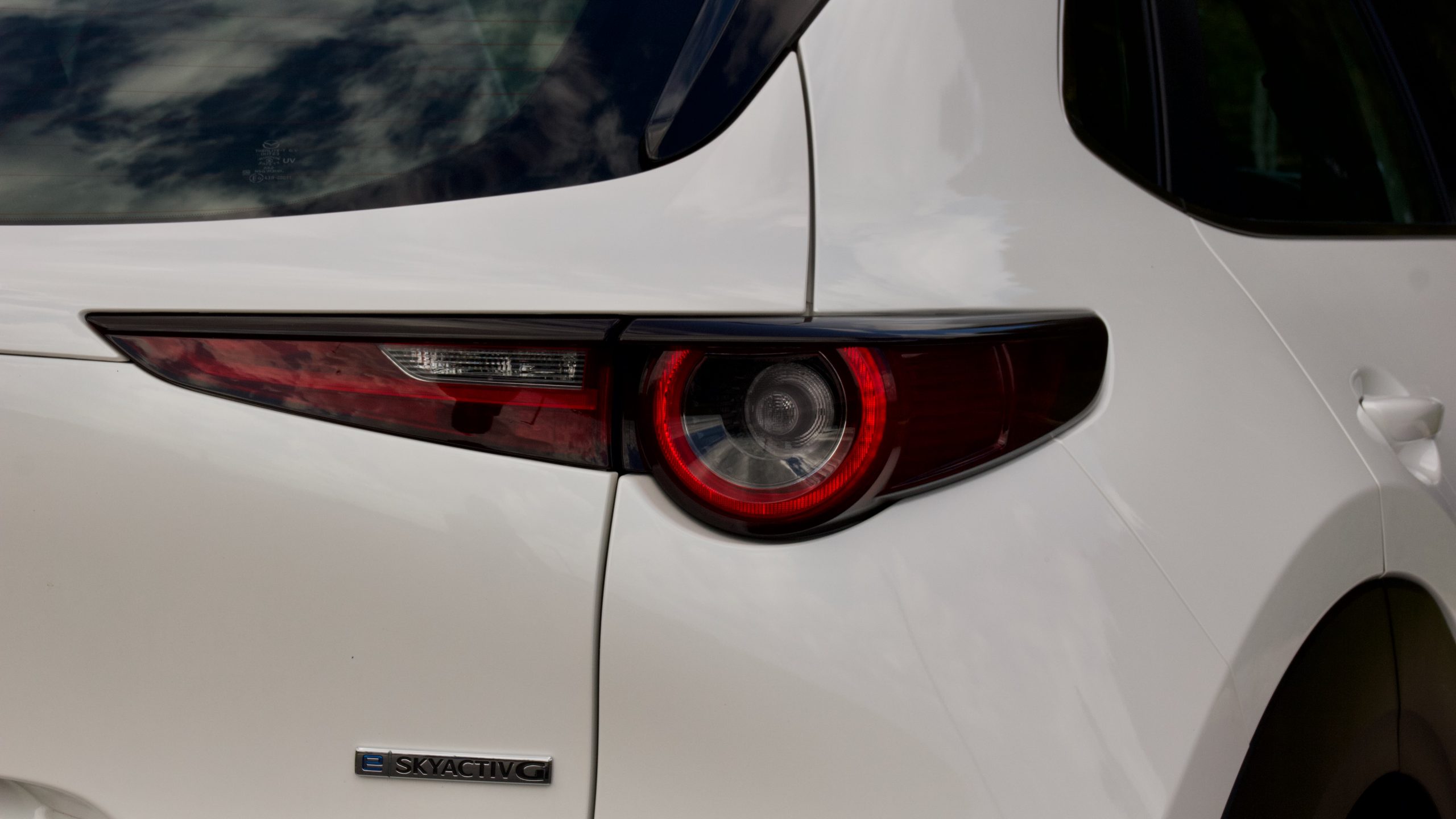
We think the CX-30 G20e Evolve is good value for money against competitors, but how about against other CX-30 models? Against the regular Evolve, the G20e M Hybrid costs $4,000 more to buy – but it includes the $1,500 Vision Technology package as standard, plus and electric driver’s seat with memory functionality. That makes it around $2,000 more than the Evolve for only a 0.2L/100km saving, which is hard to swallow.
Performance & Economy: 7.5/10
Under the bonnet of the 2022 Mazda CX-30 G20e Evolve Mild-Hybrid is a 114kW/200Nm 2.0-litre four-cylinder petrol engine that’s mated to a mild-hybrid system to aid fuel economy and performance. That’s mated to a six-speed automatic transmission only and unlike higher-end CX-30 models, the G20e Evolve is front-wheel drive only.
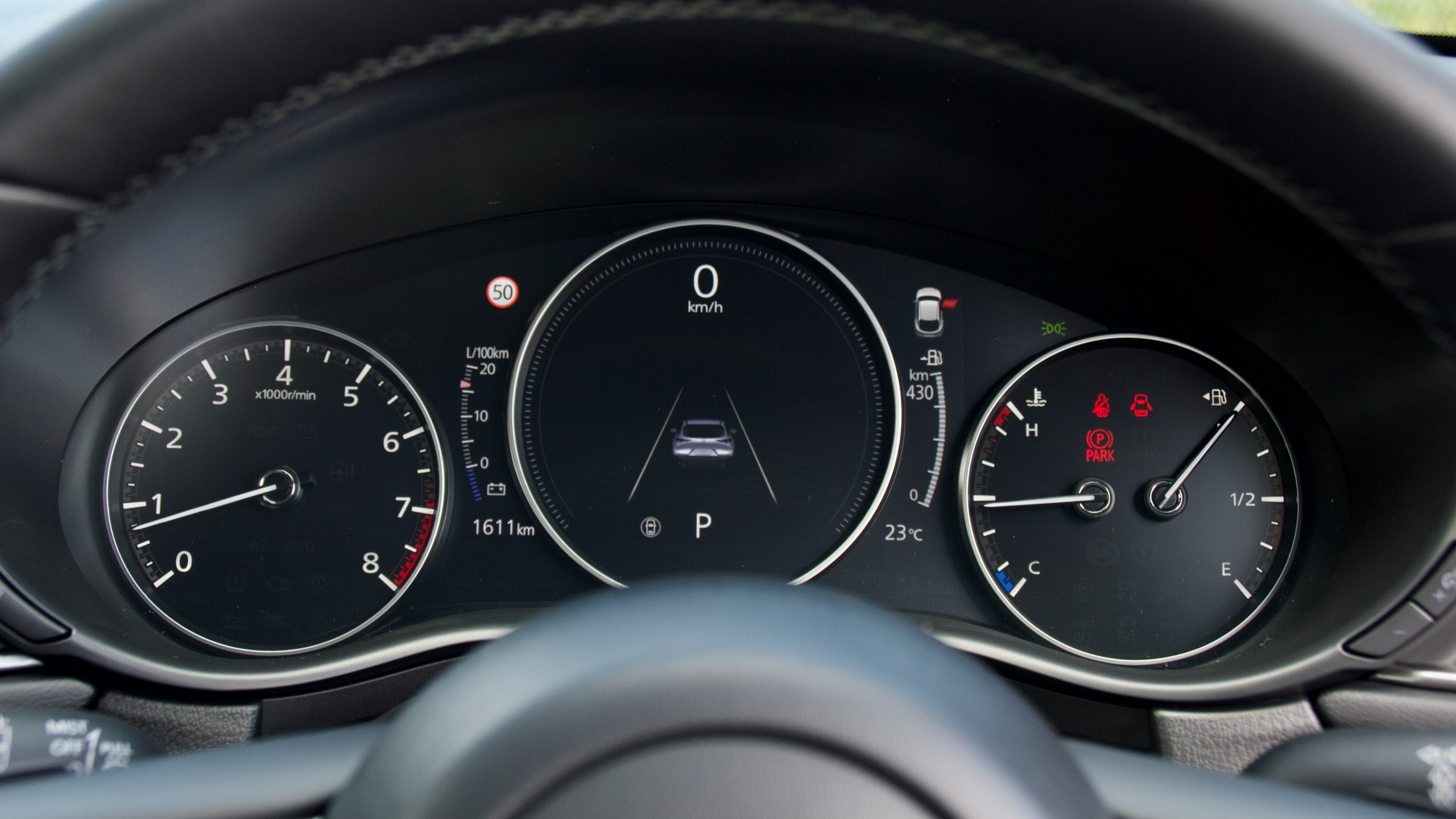
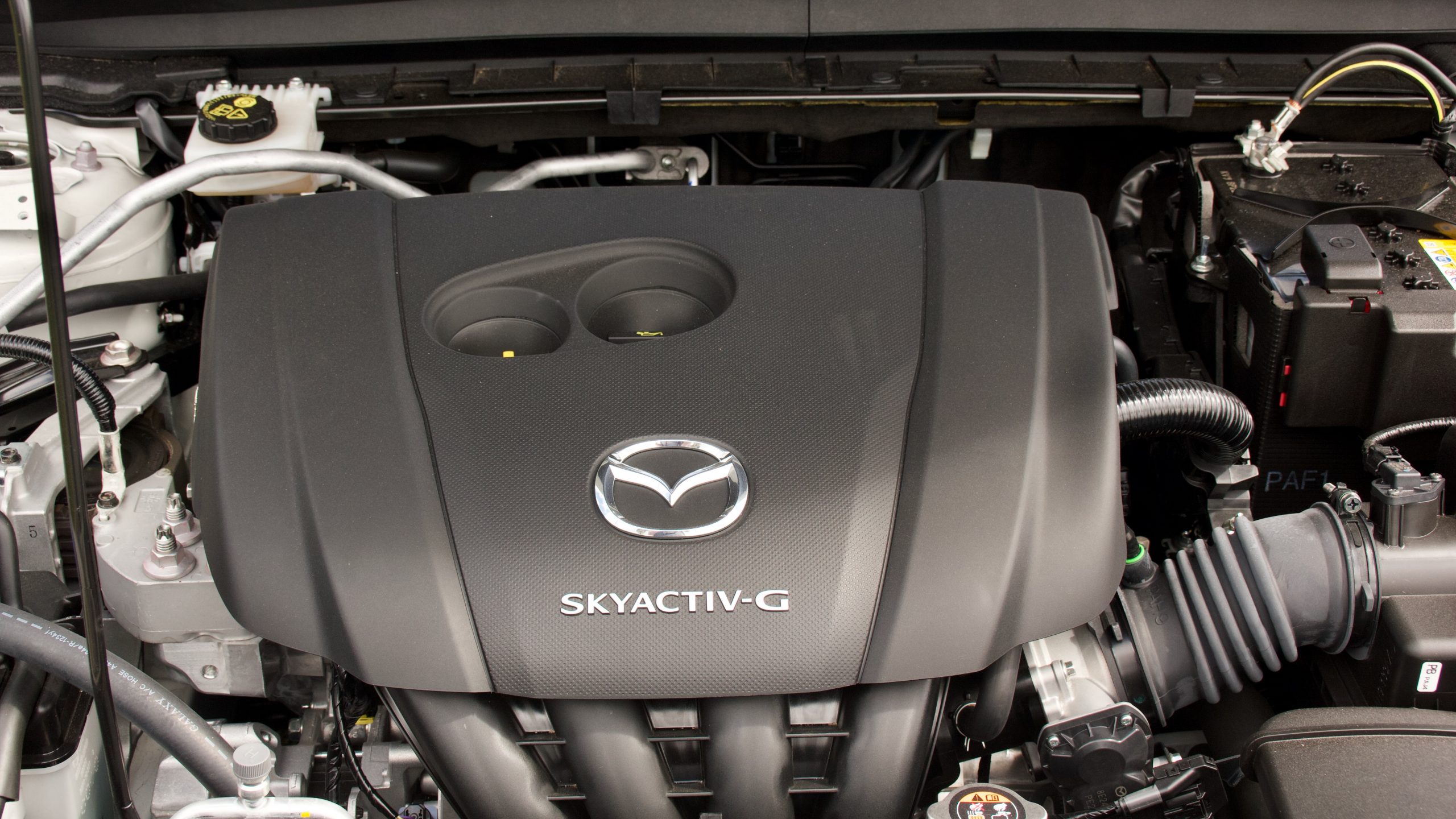

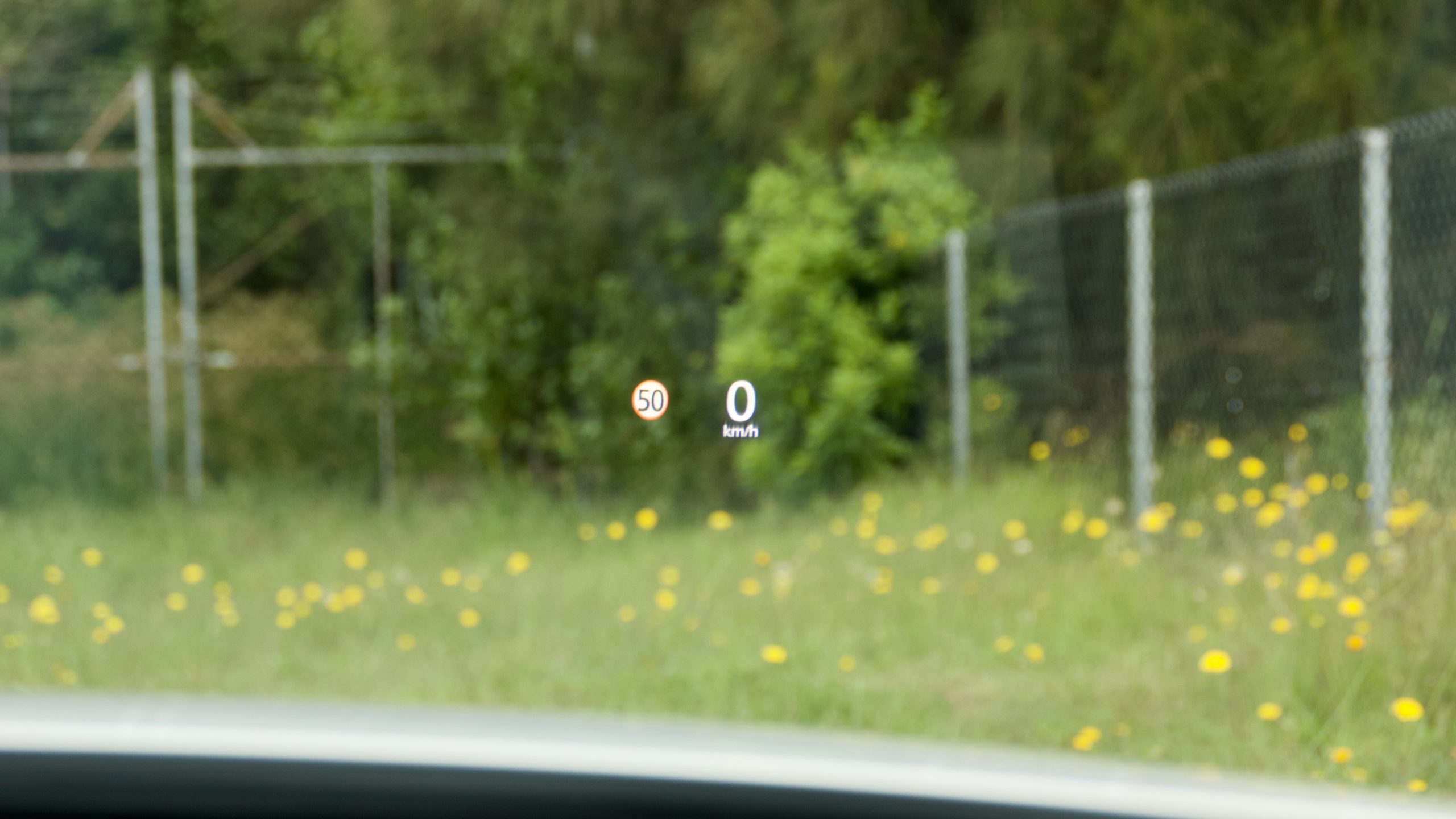
The 2.0-litre petrol engine in the CX-30 hasn’t changed much since its release in the first-generation CX-5. In the CX-30, it’s no powerhouse either, but it’s got more than enough pep for urban driving. Helping that is the excellent six-speed automatic transmission, which further proves Mazda’s engineering excellence by being very well tuned. The sport mode is also great as well, holding gears for a perfect amount of time and making the throttle a touch sharper. Having said that, it can’t hide the 2.0-litre engine’s outputs so if you want more go, we suggest stepping up to the 139kW/252Nm 2.5-litre CX-30, which you can also have with all-wheel drive.
Aside from shutting the engine off earlier when coming to a complete stop and staying off longer than the regular engine, the mild-hybrid bits in the CX-30’s drivetrain produce a mild effect at best. It adds a touch more punch when starting off, but you don’t really notice it otherwise. It’s certainly not anywhere near a regular hybrid, like the C-HR hybrid, but it did prove more efficient and more drivable than the 2.0-litre Kia Seltos and its CVT automatic.
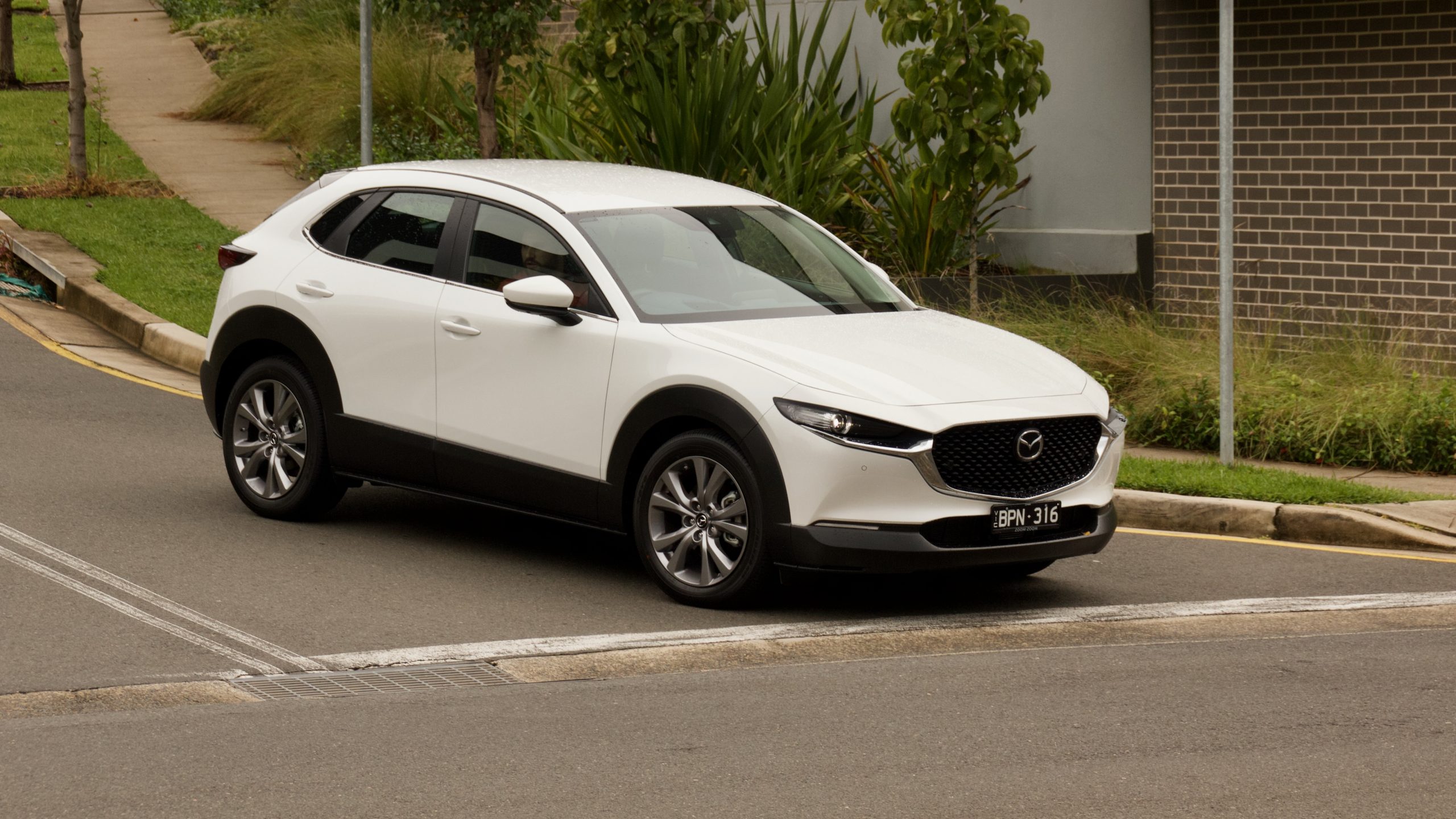
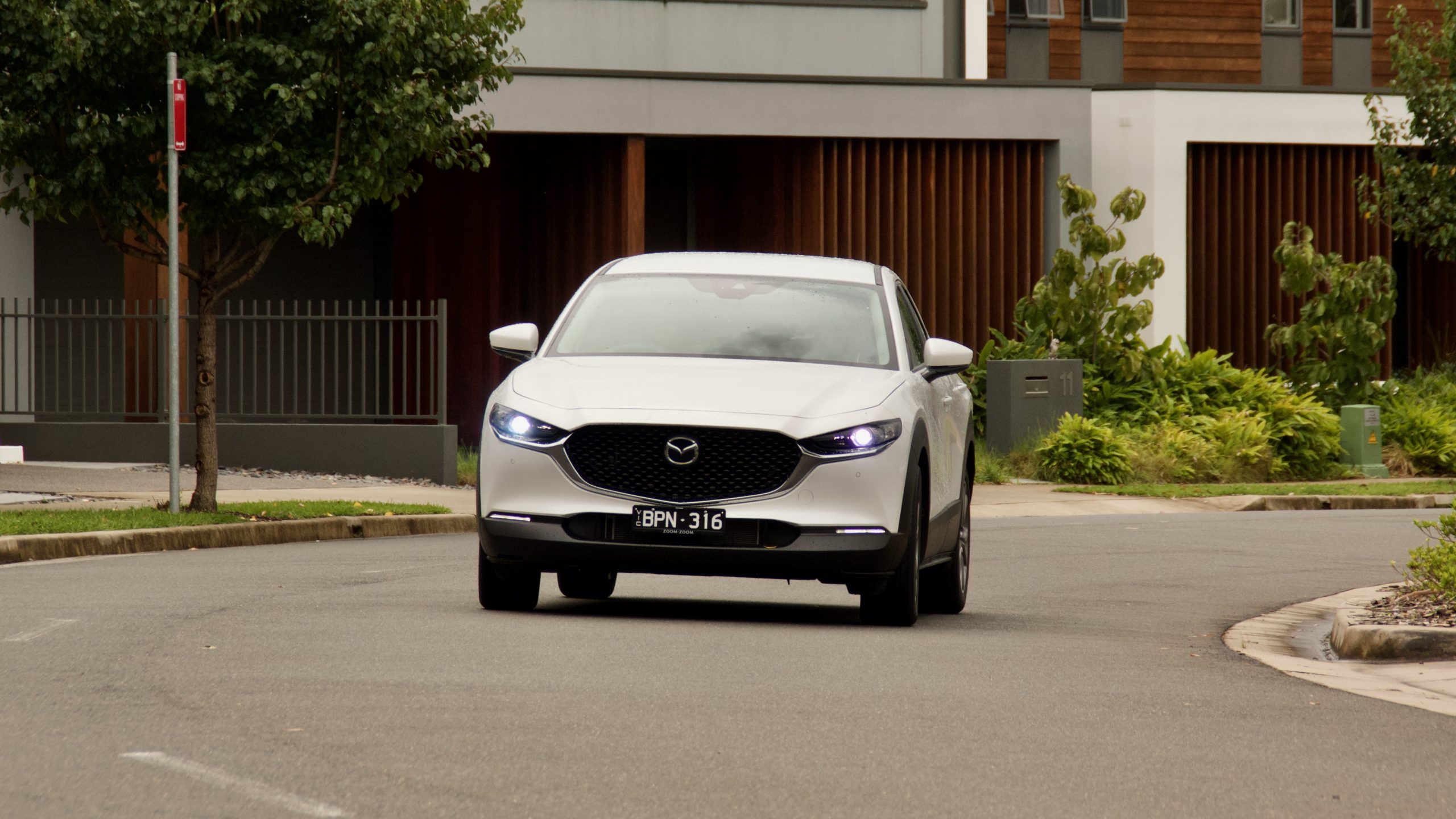
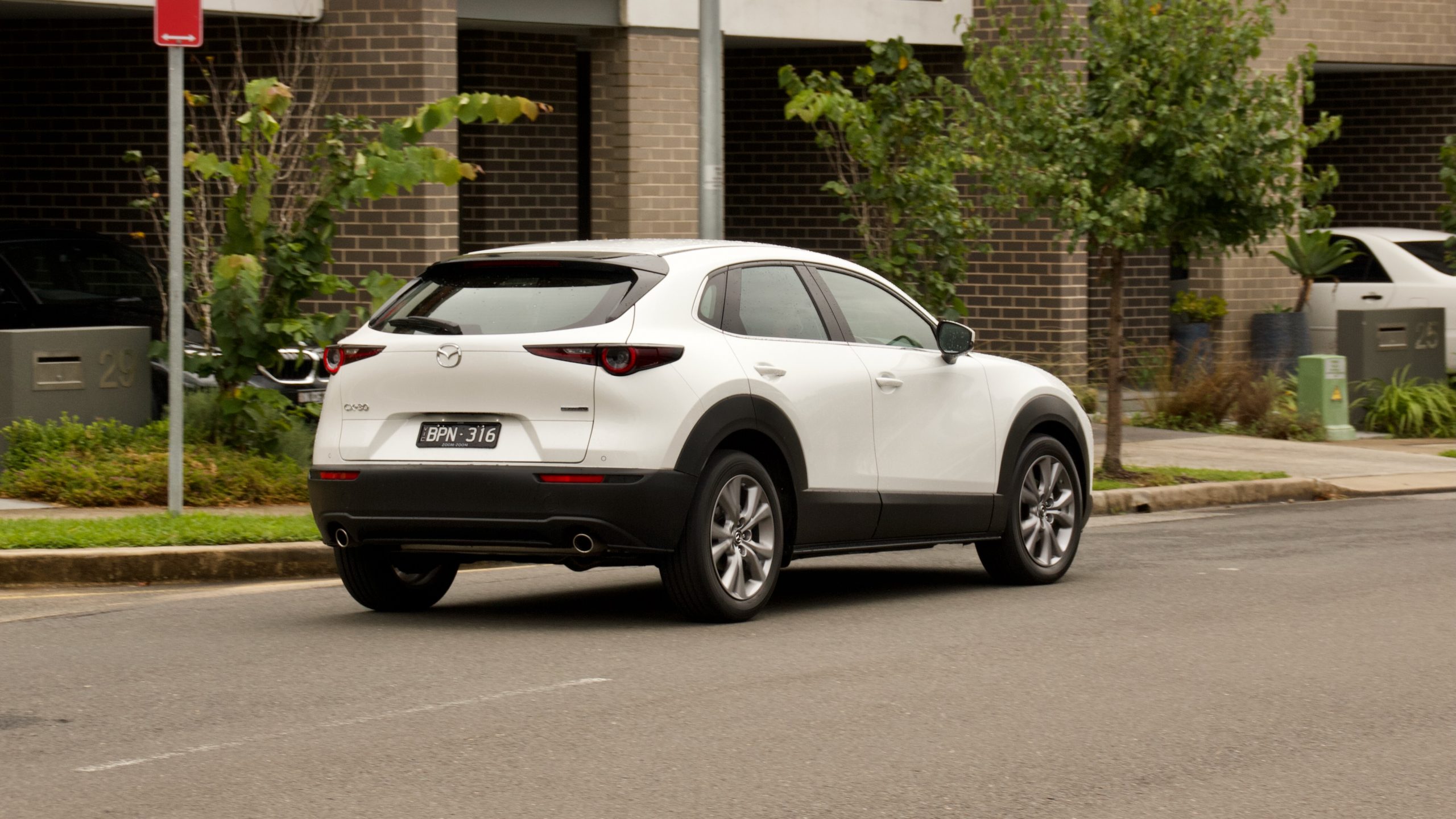
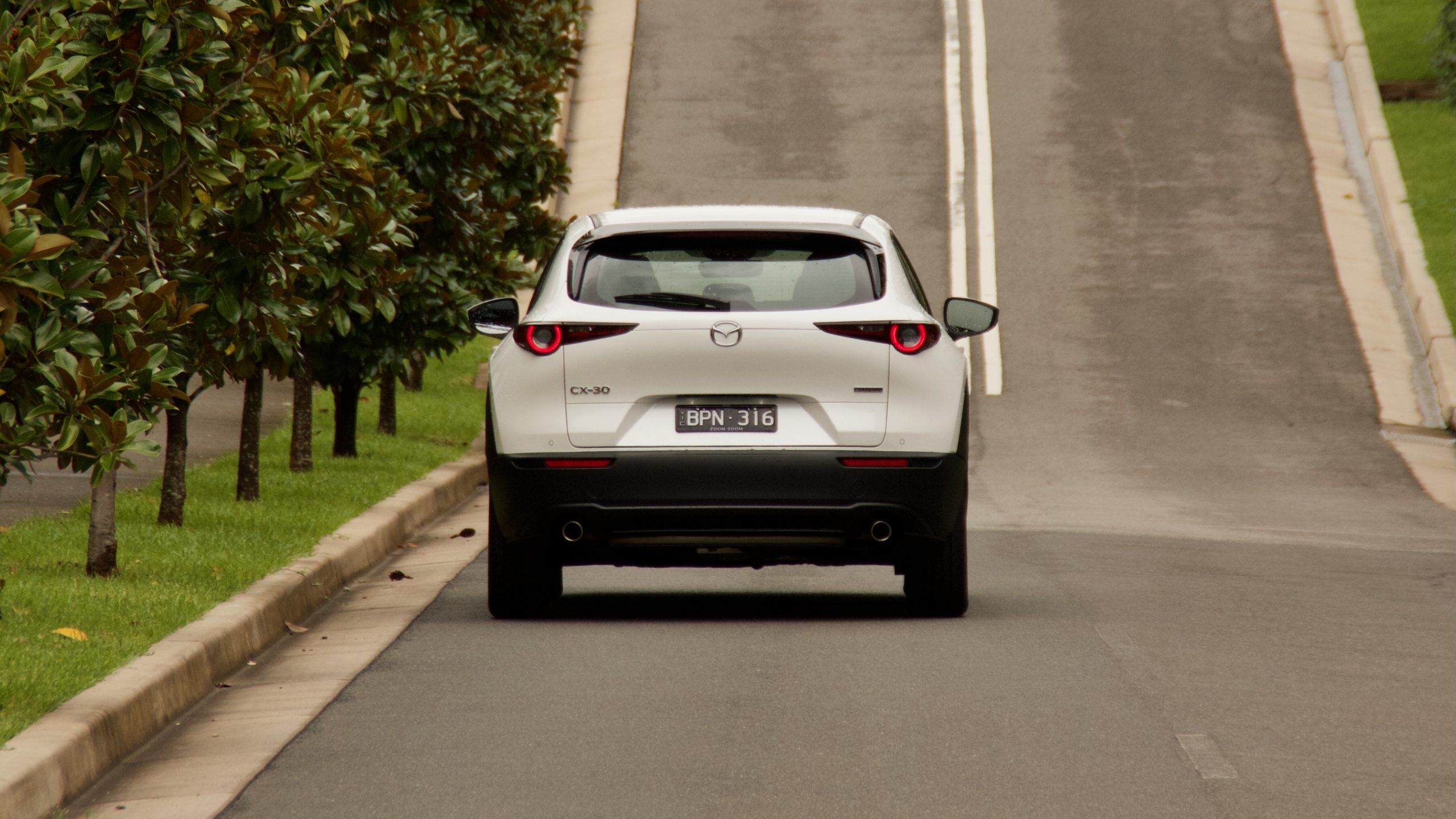
The combined fuel consumption of the CX-30 G20e mild-hybrid is rated at 6.3L/100km, which is 0.2L/100km less than the non-mild hybrid CX-30. In our testing, skewed towards urban driving, we achieved 8.4L/100km, which isn’t too far from the claim and is superior to cars like the Kona and Seltos in our testing. Like other front-wheel drive CX-30 models, the G20e has a 51-litre fuel tank and can be filled with 91RON regular unleaded.
Ride & Handling: 9/10
Like most other Mazda products for the past few decades, the 2022 Mazda CX-30 G20e Evolve drives in a sporty way that other small SUVs just don’t quite match. The ride and handling balance in the Seltos or C-HR is a touch better in our opinion, but if you’re buying a small SUV for a Sunday drive, the CX-30 is the one as its chassis is well set up for handling and driving fun. The steering is a touch heavy for our liking, but it’s meaty and adds to the driving fun. Words like balance can be applied to the CX-30 as it tackles corners with aplomb.
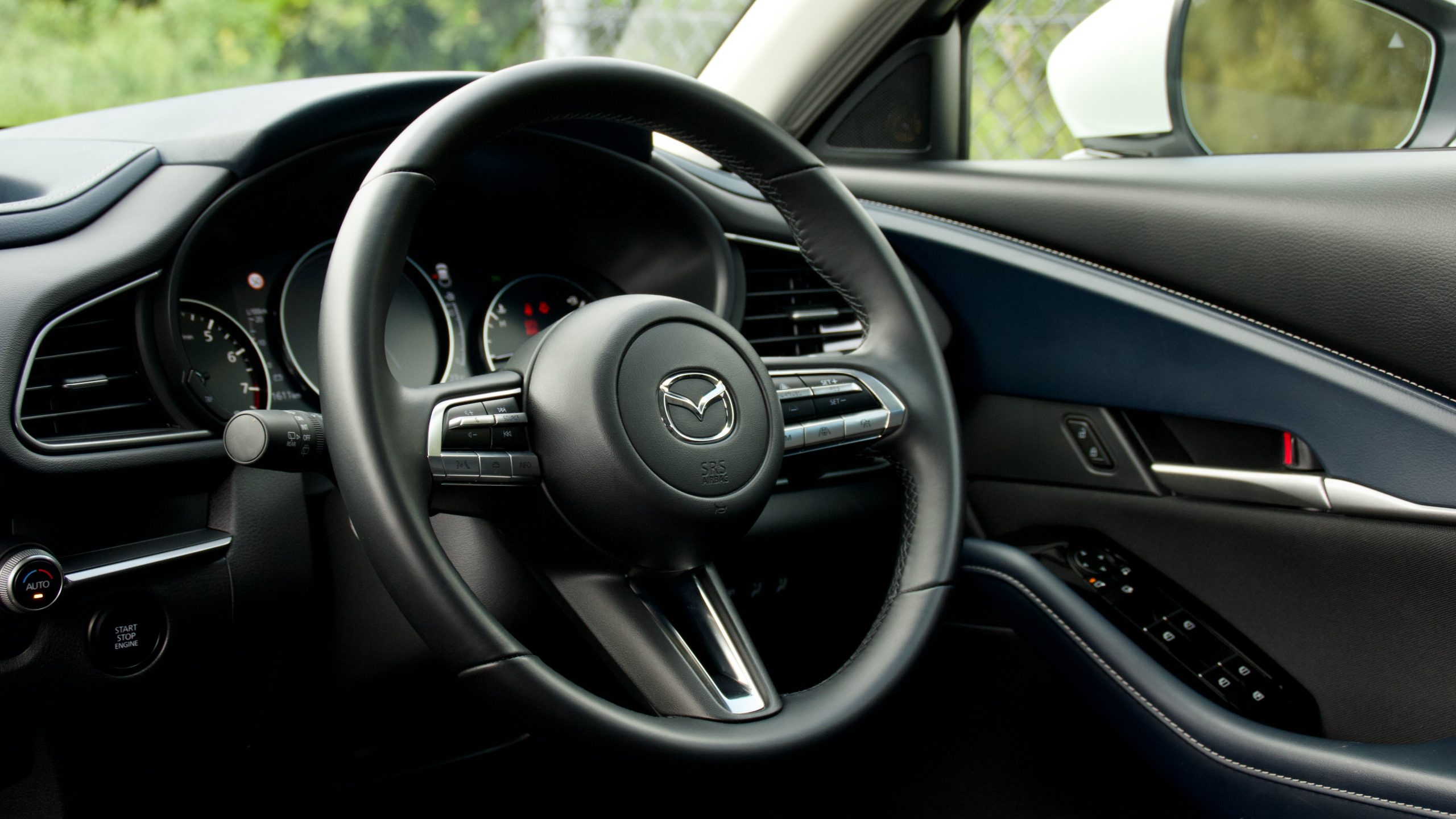
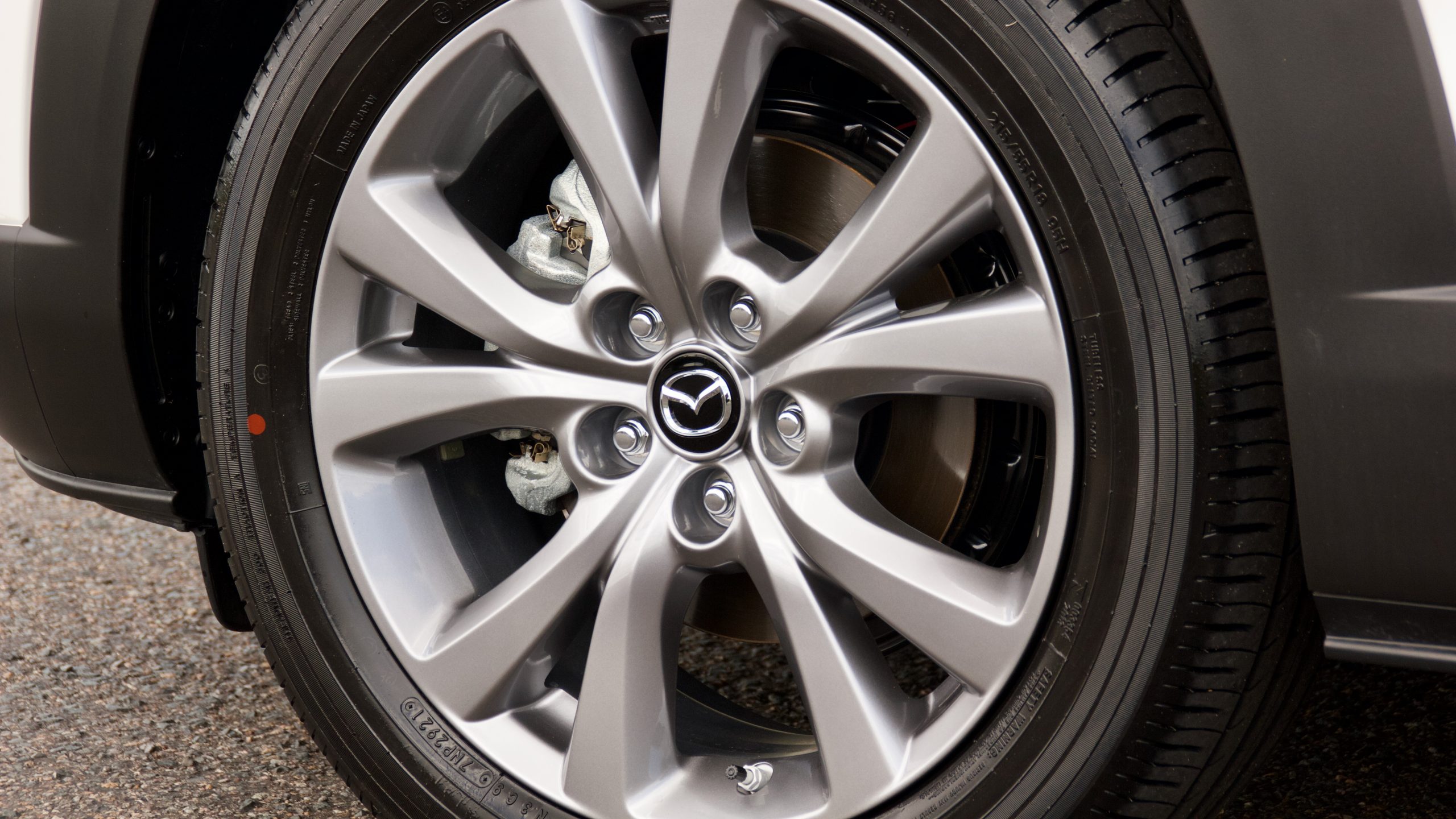
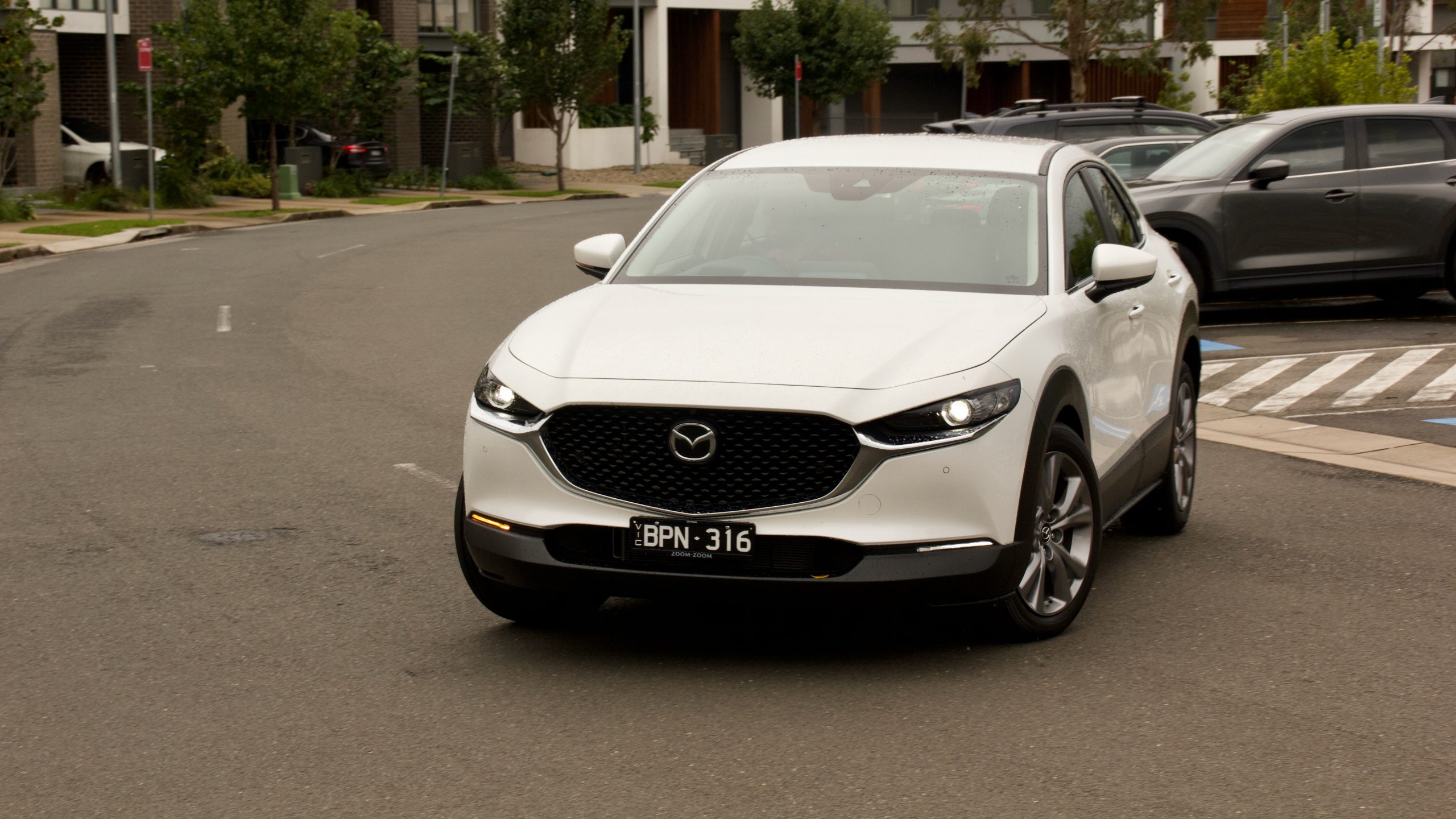
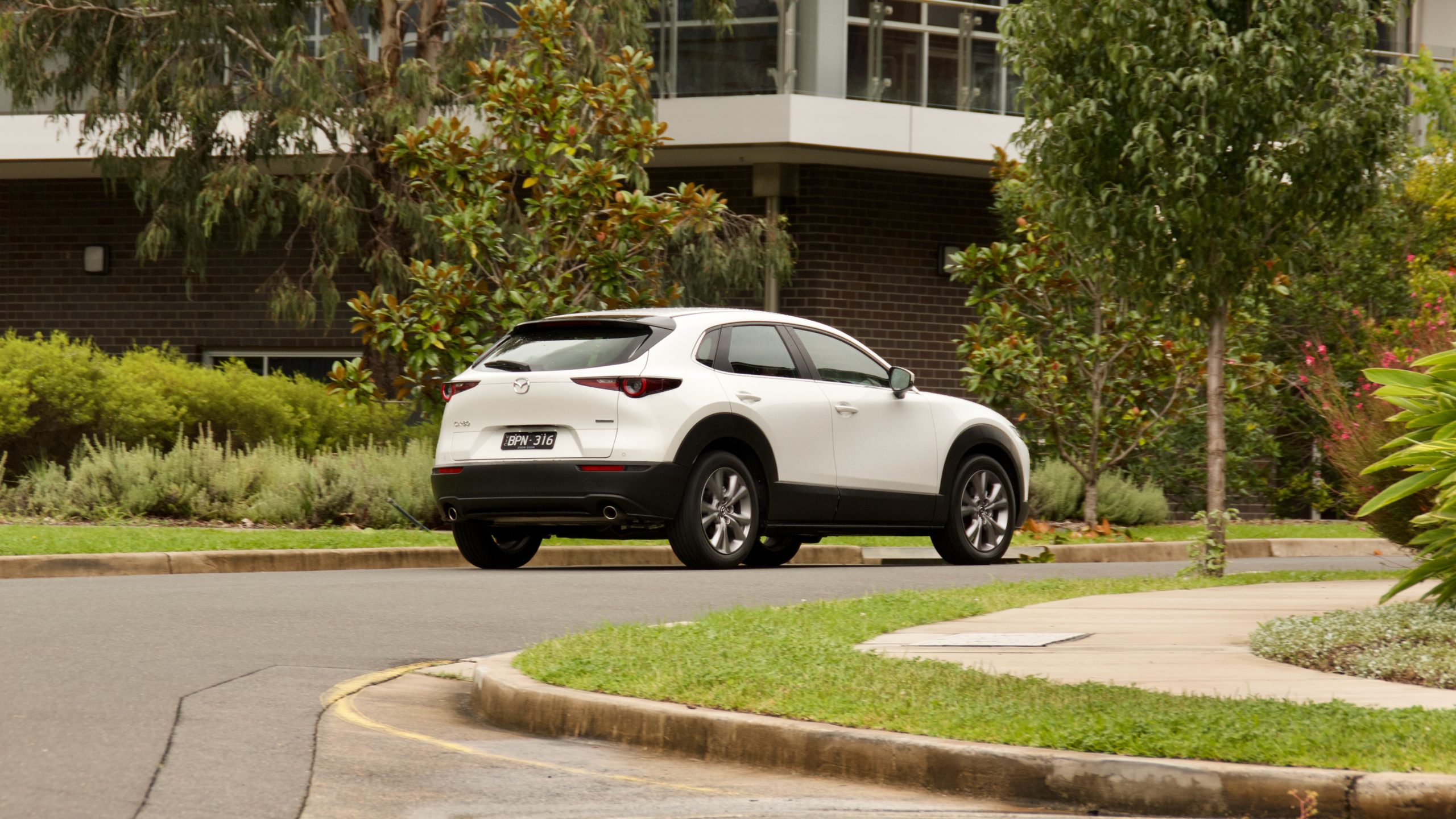
Because of this sporty attitude, the ride quality of the CX-30 is a touch firm, however. The rear end is noticeably firmer than the front and you do feel bumps more than something like the Aussie-tuned Seltos. But the rest of the CX-30 driving experience is positive – its road noise levels are quite low – especially against the loud Seltos – and while the visibility is not great, the active safety systems are very well tuned and make you feel safe. The 360-degree camera is particularly well done with a high quality camera feed and multiple view points.
Interior & Practicality: 8/10
Upon its release only a few years ago, we were quite impressed with the CX-30’s cabin quality and its integration of a lengthy list of standard tech and the same is true today. Many surfaces like the dashboard, door tops, arm rests and even centre console are covered in stitched leather-like materials and the switchgear is chrome plated and feels excellent. Even in the second-from-bottom Evolve model, there’s a real focus on quality inside the CX-30 and against something like the basic cabin of the Kia Seltos, it feels like a luxury car. The swoopy layout and minimalist design also appeal.
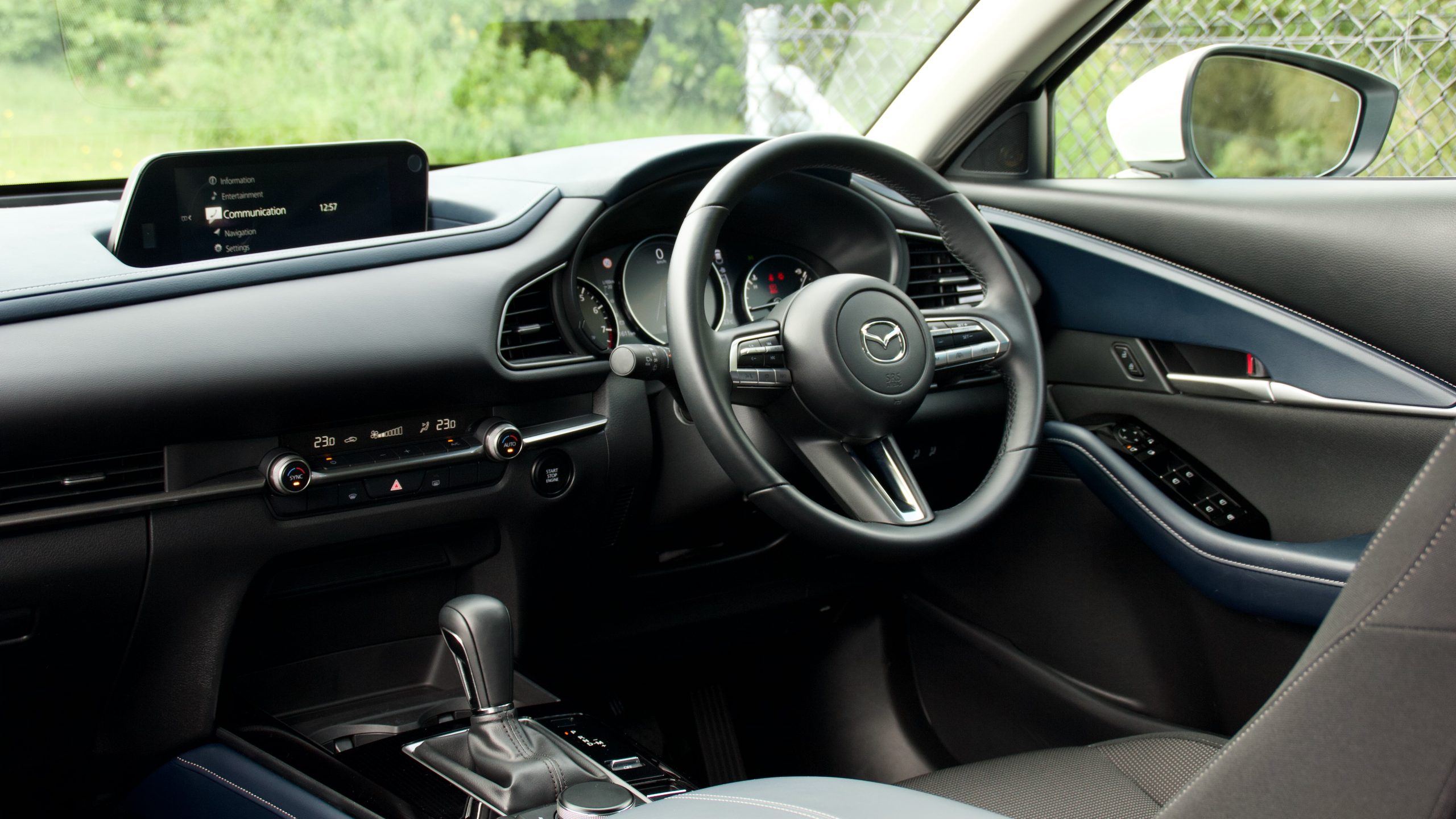
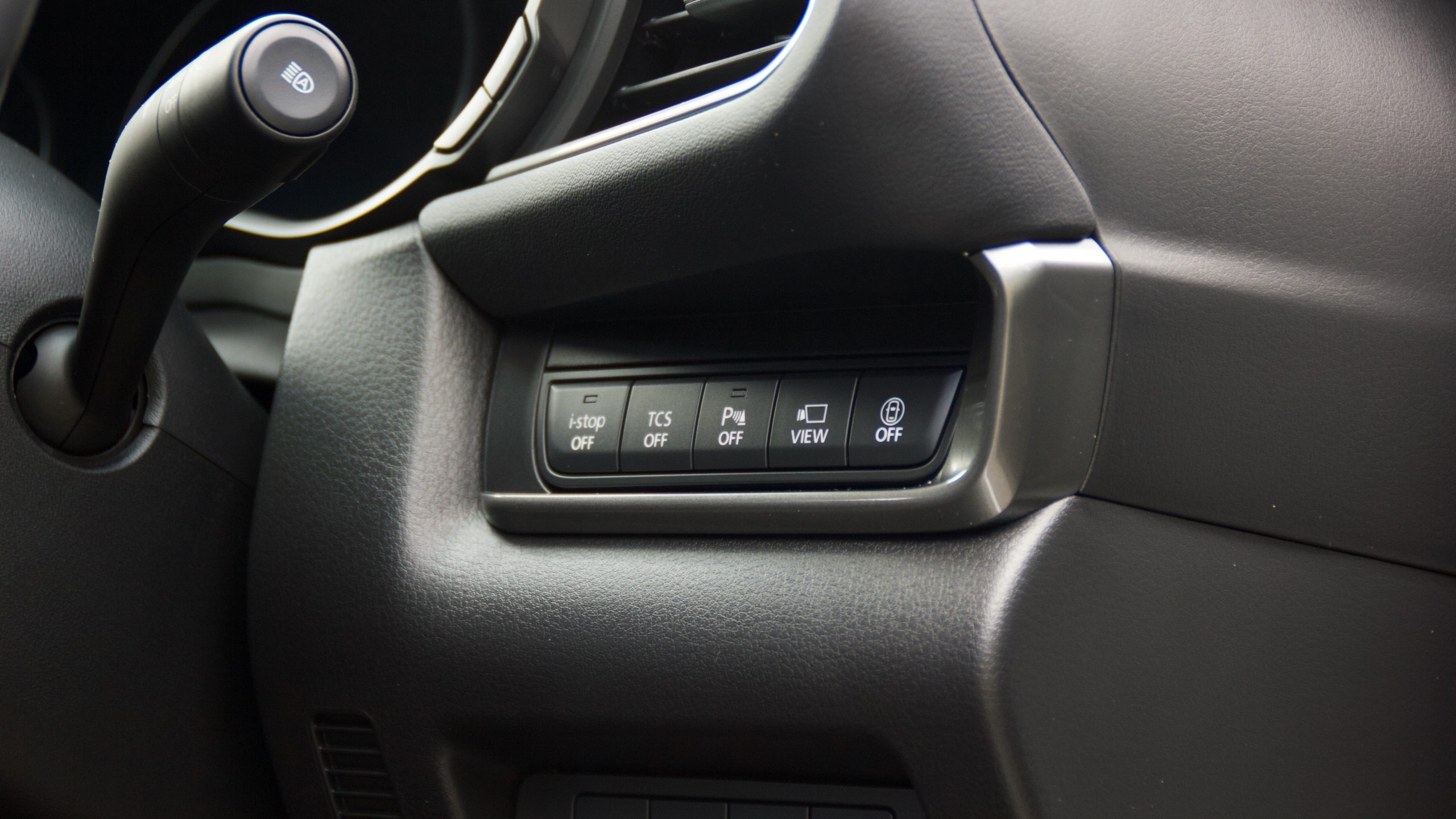
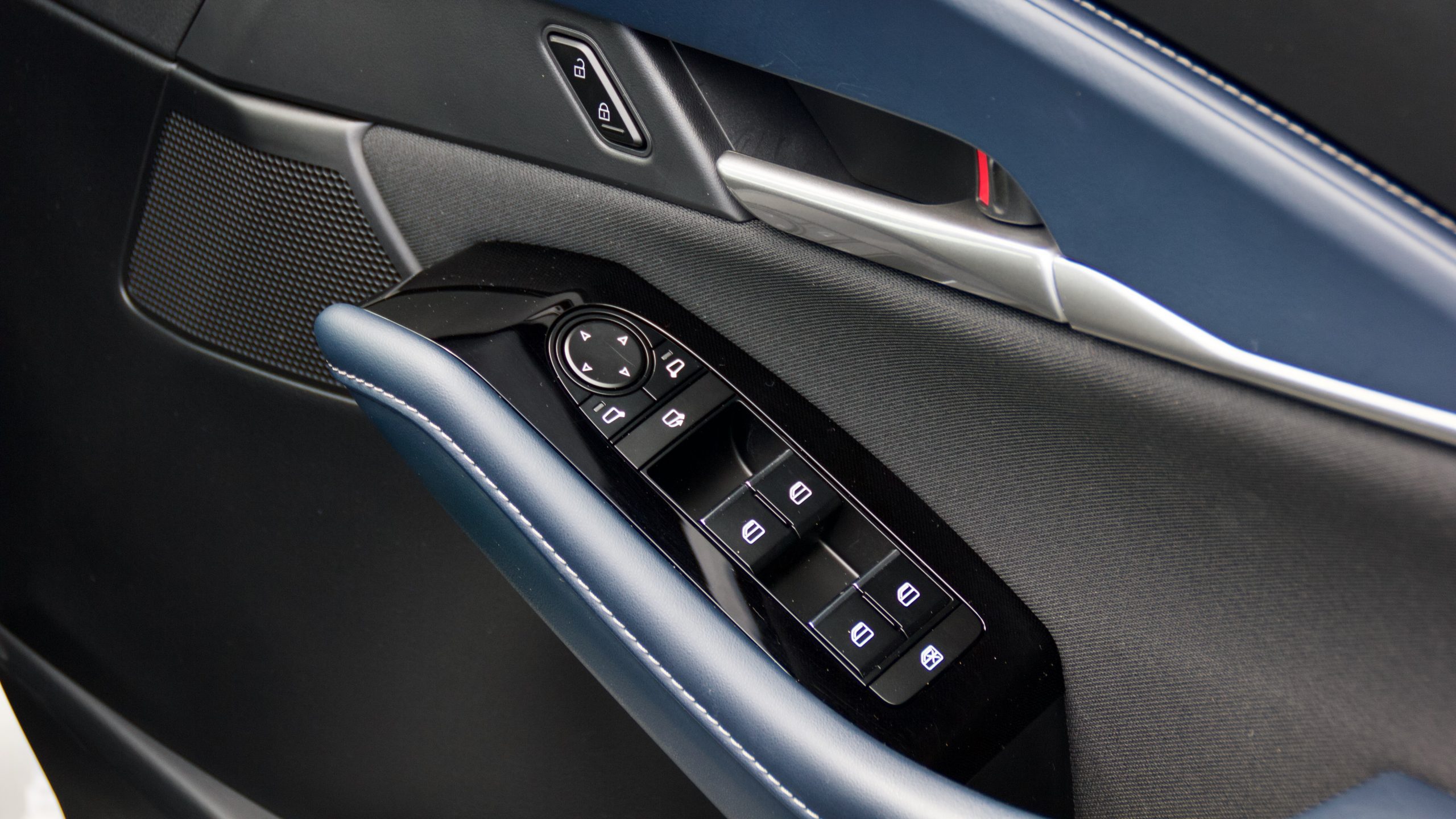
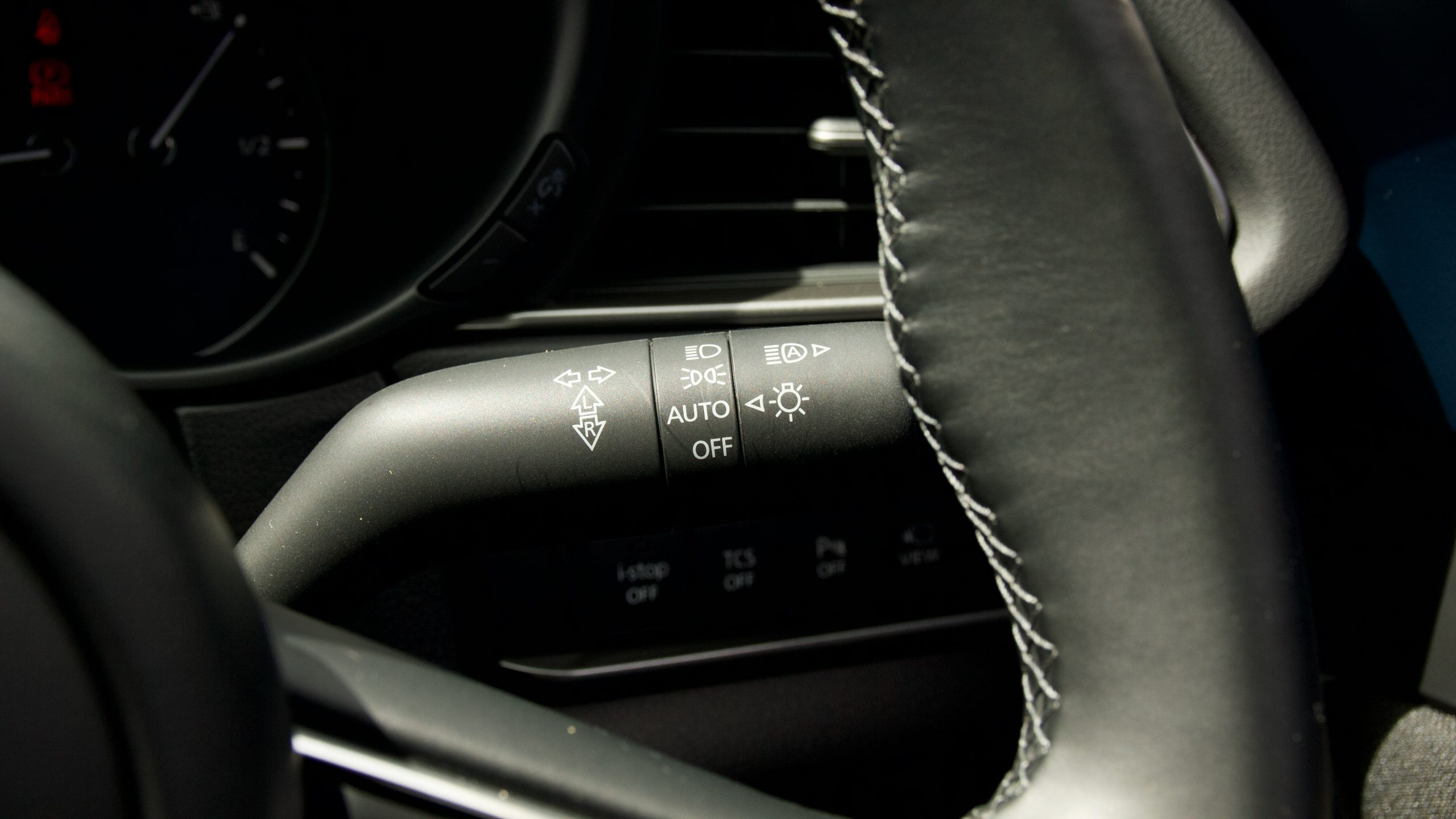
The CX-30’s cabin is also relatively practical with nicely-sized door bins, a deep centre console box, two cupholders and a tray ahead of the gearbox and a reasonable glovebox. We’d like to see a wireless charger and more USB ports added in, however, for a greater number of charging options.
Centre of the dashboard is an 8.8-inch infotainment system with wired Apple CarPlay and Android Auto, satellite navigation and digital radio. To the dismay of some, it isn’t a touchscreen, and is controlled by a wheel between the front seats. But Mazda’s positioning of the screen far away and in line with the driver’s eyesight means that touching it is impractical, in our opinion, but it also means that drivers don’t have to take their eyes off the road when using it. It’s an intuitive system with shortcuts next to the wheel and once you’ve learnt it, it’s great.
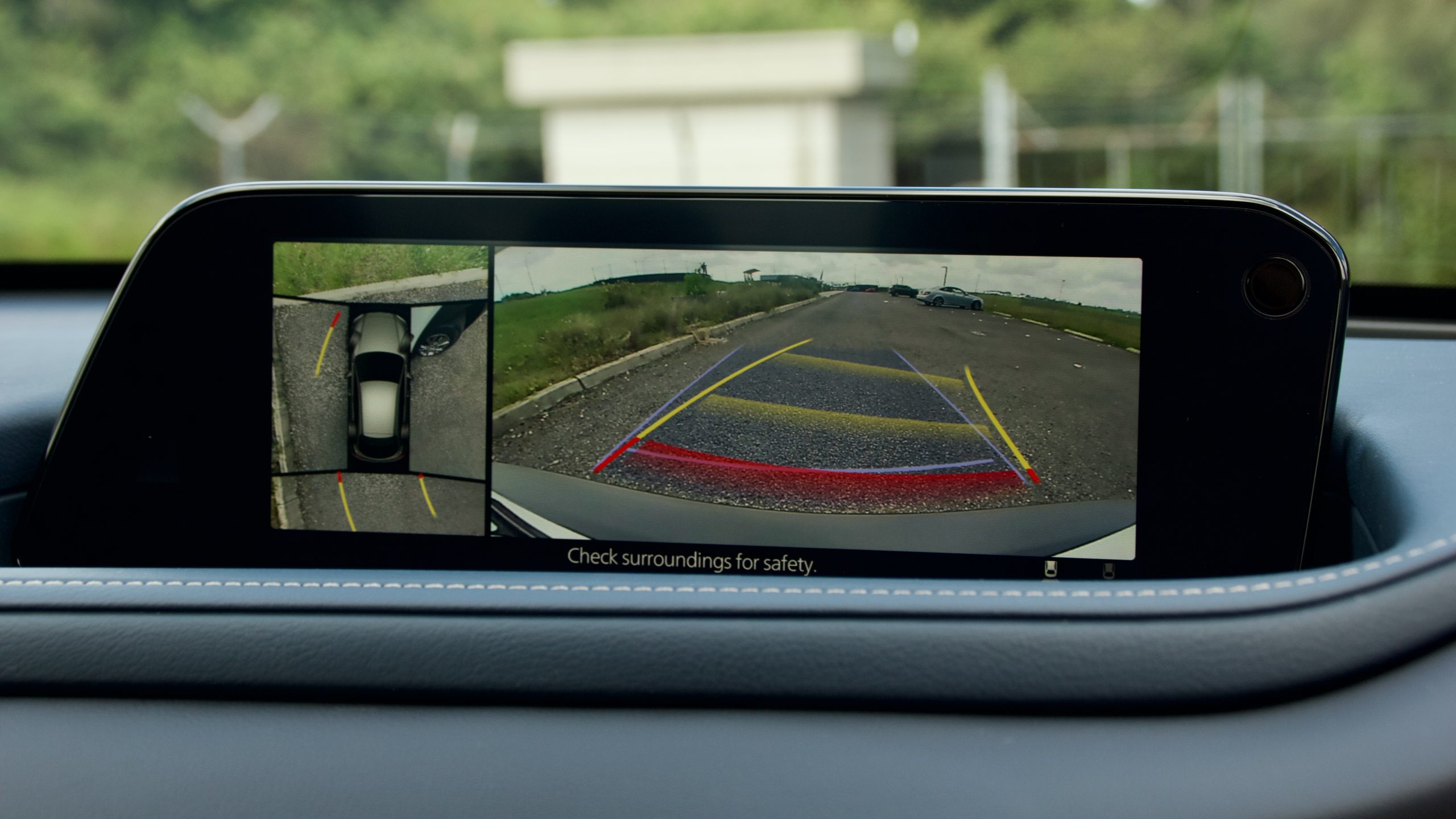
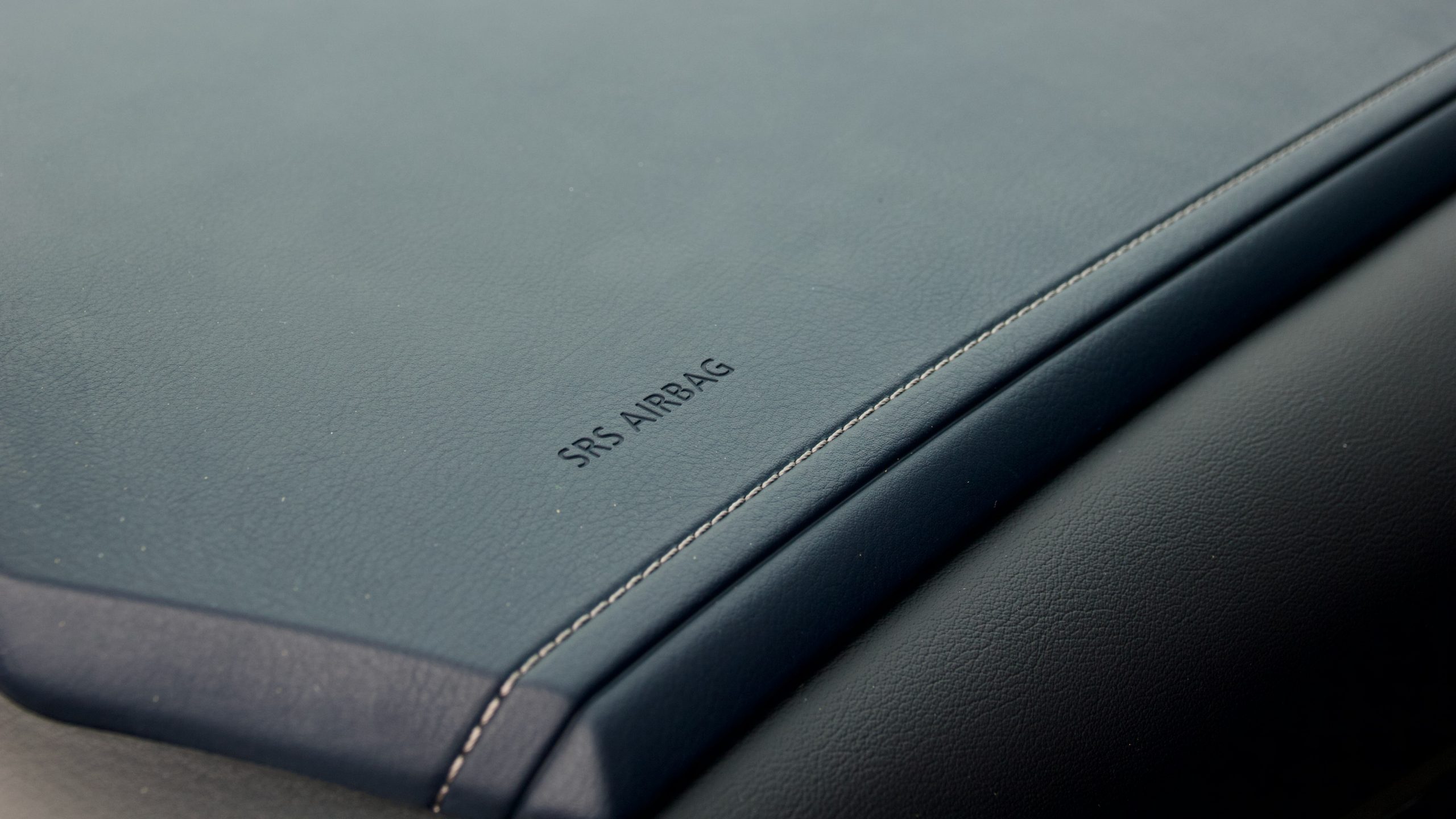
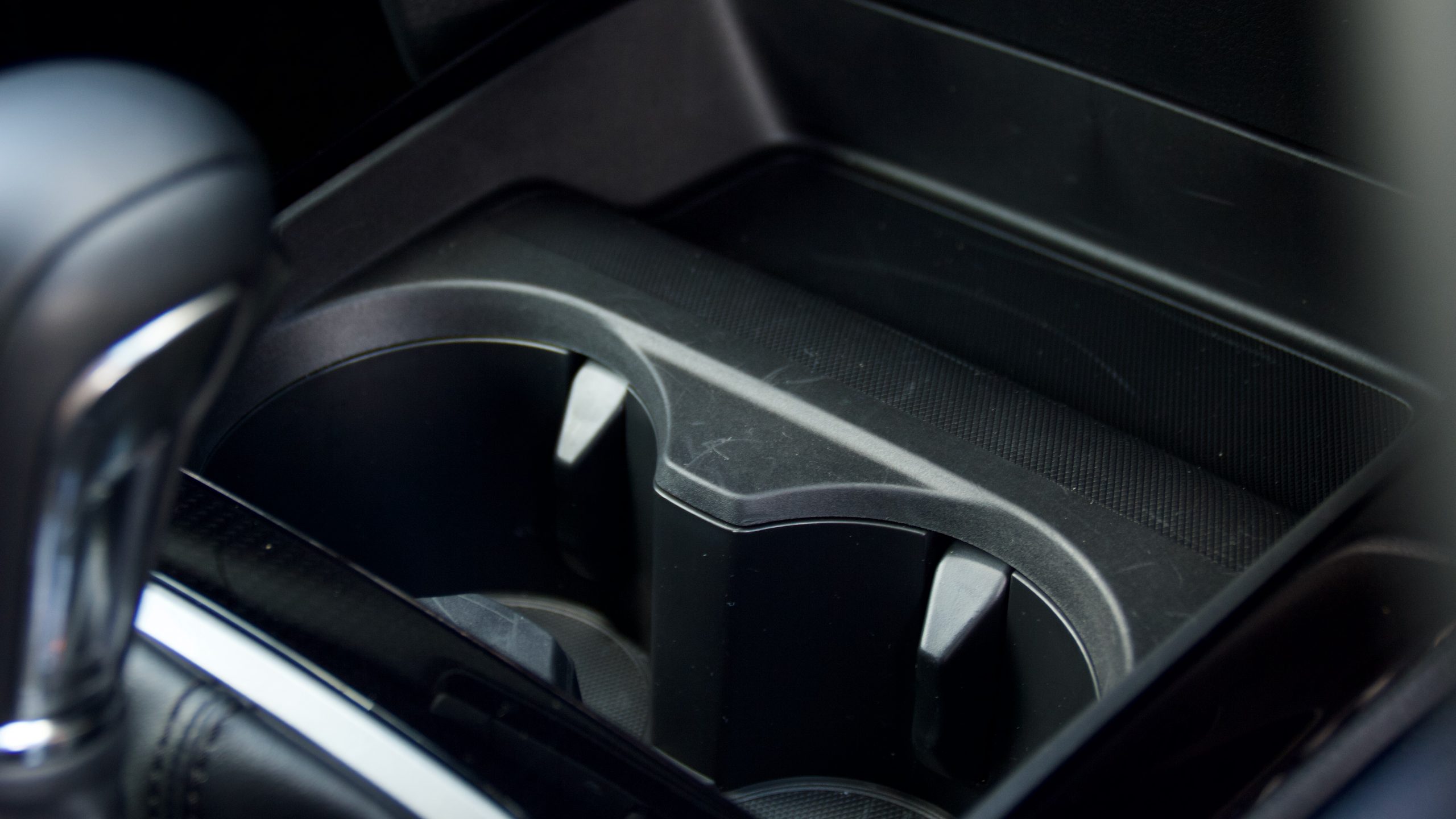
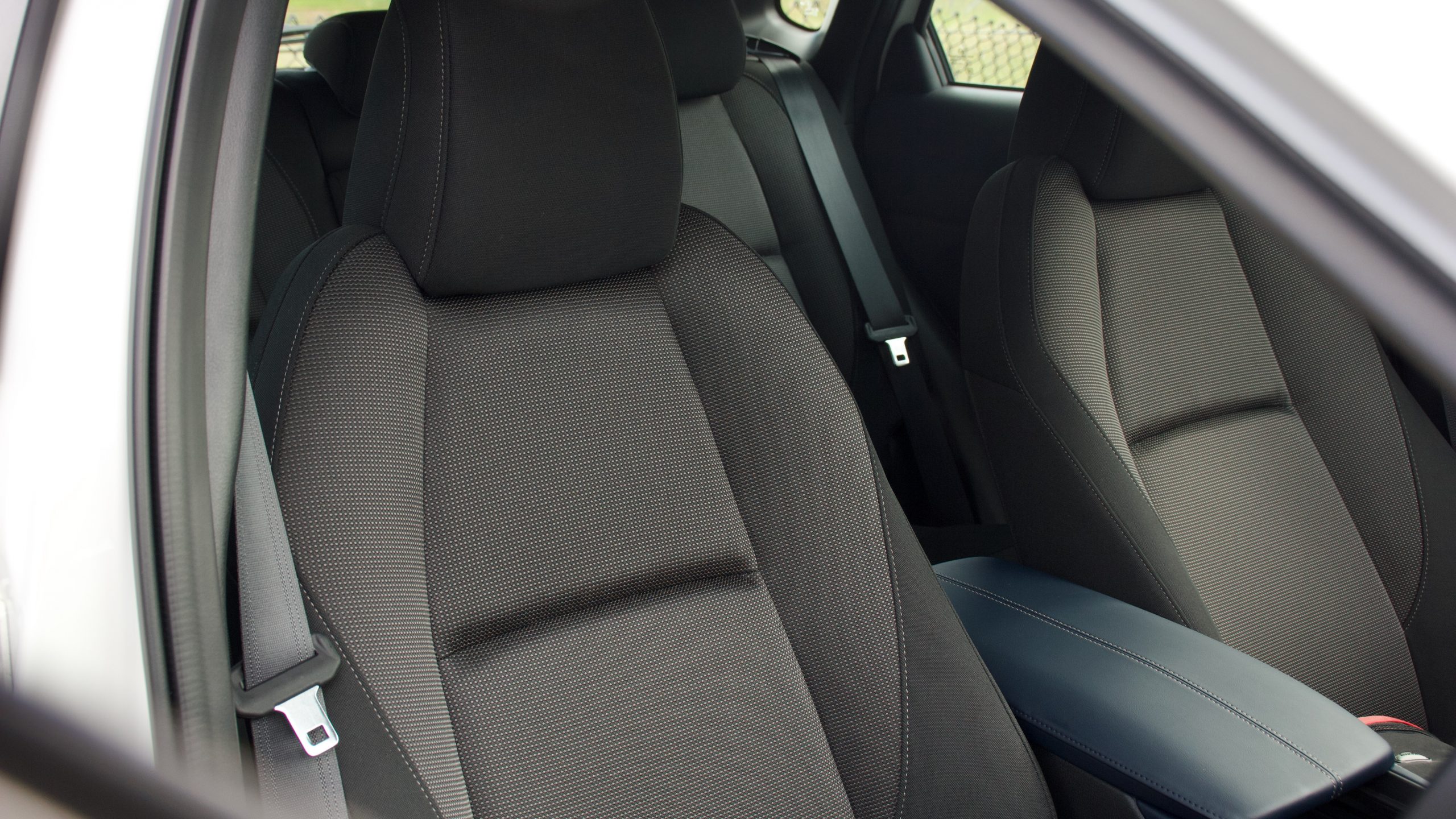
The back seat and boot is perhaps – depending on what you’re buying it for – its downfall as against the Seltos or even a smaller Skoda Kamiq, it’s cosy. Six-footers will just fit, though the small windows make it feel somewhat claustrophobic – they’re thankfully much larger than those in the Toyota C-HR, though.
It features only one map pocket, a centre arm rest with cup holders, air vents, two ISOFIX points for child seats and door pockets – though no charging ports, which we think should be standard.
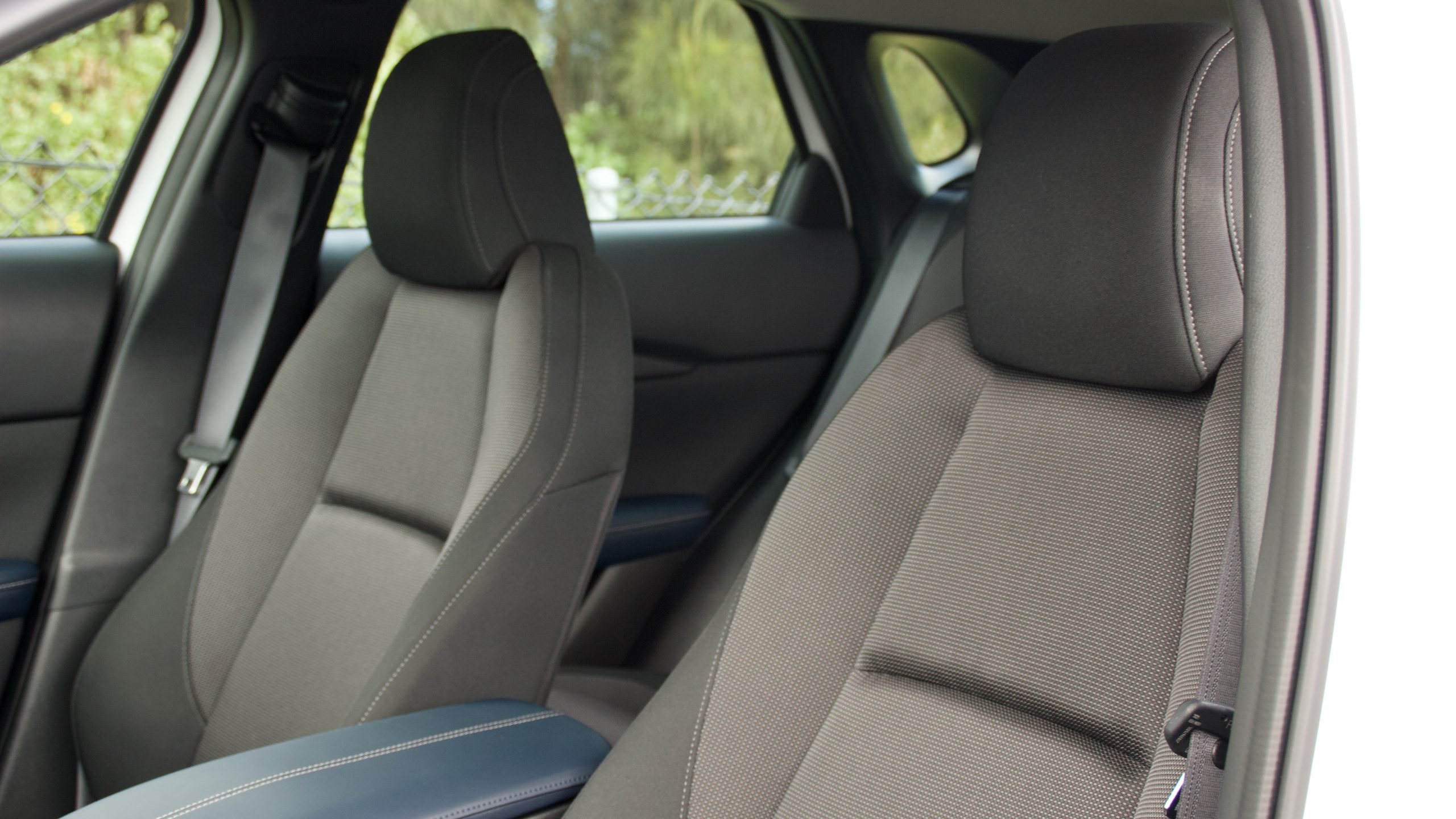
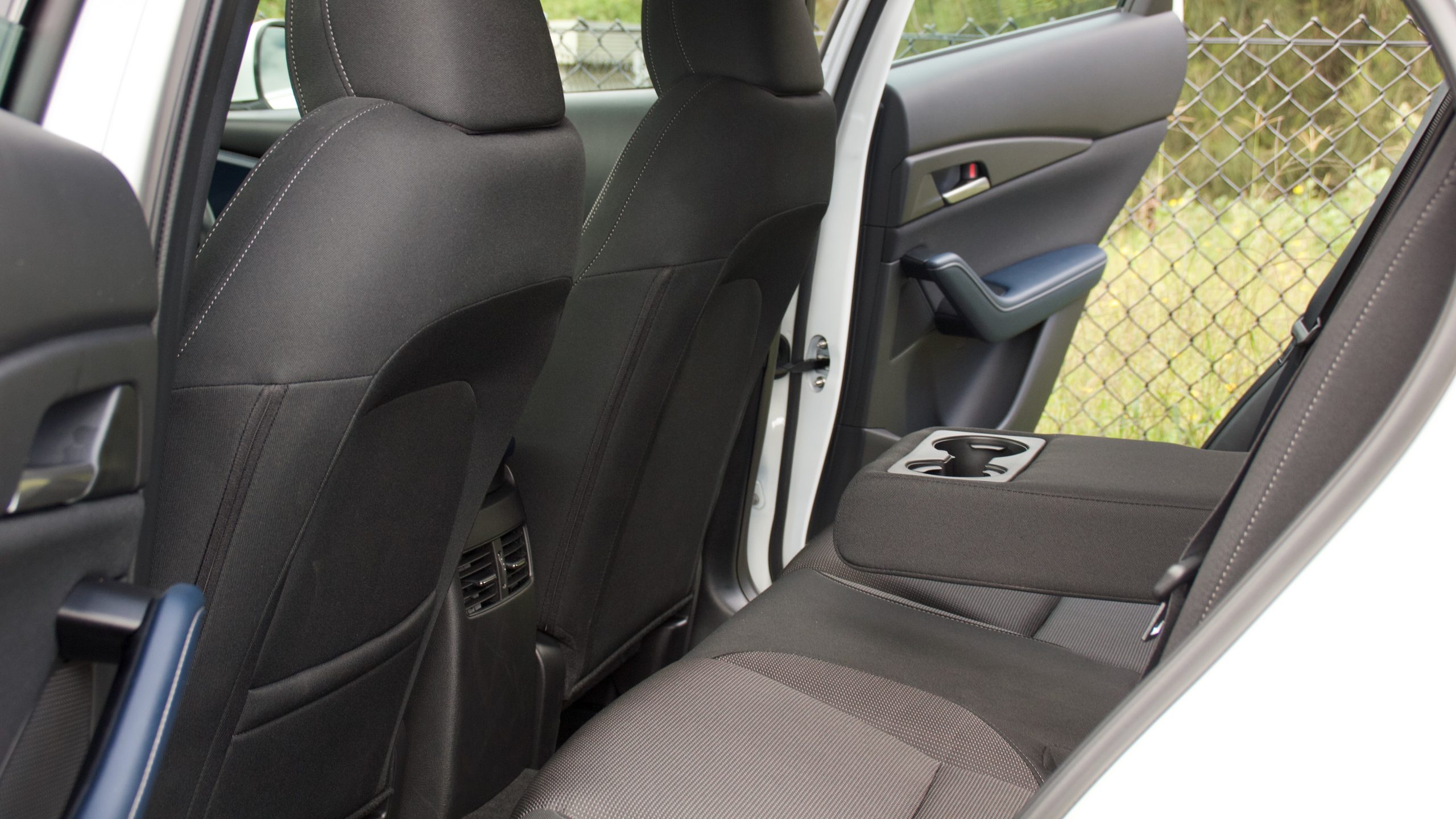
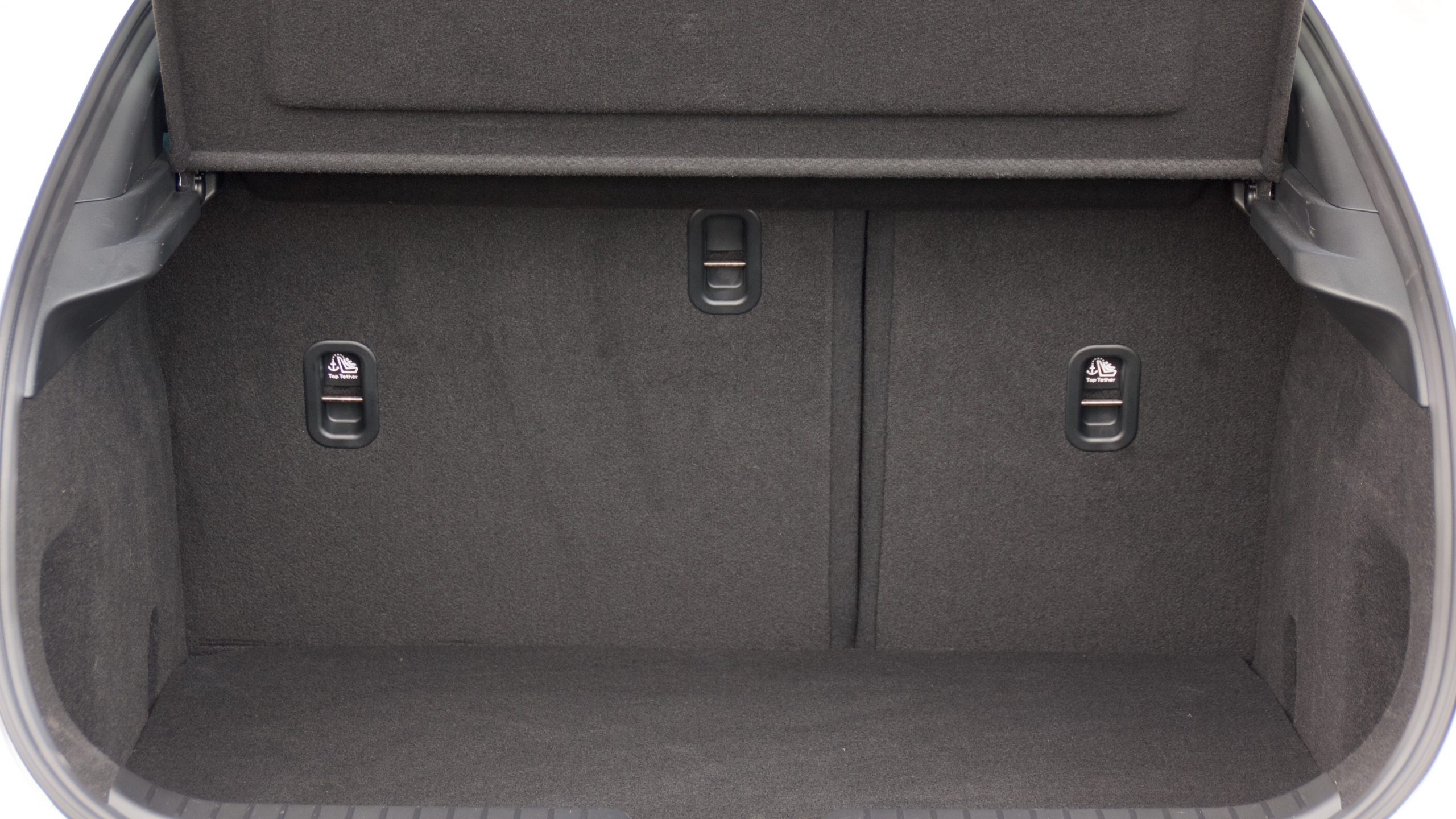
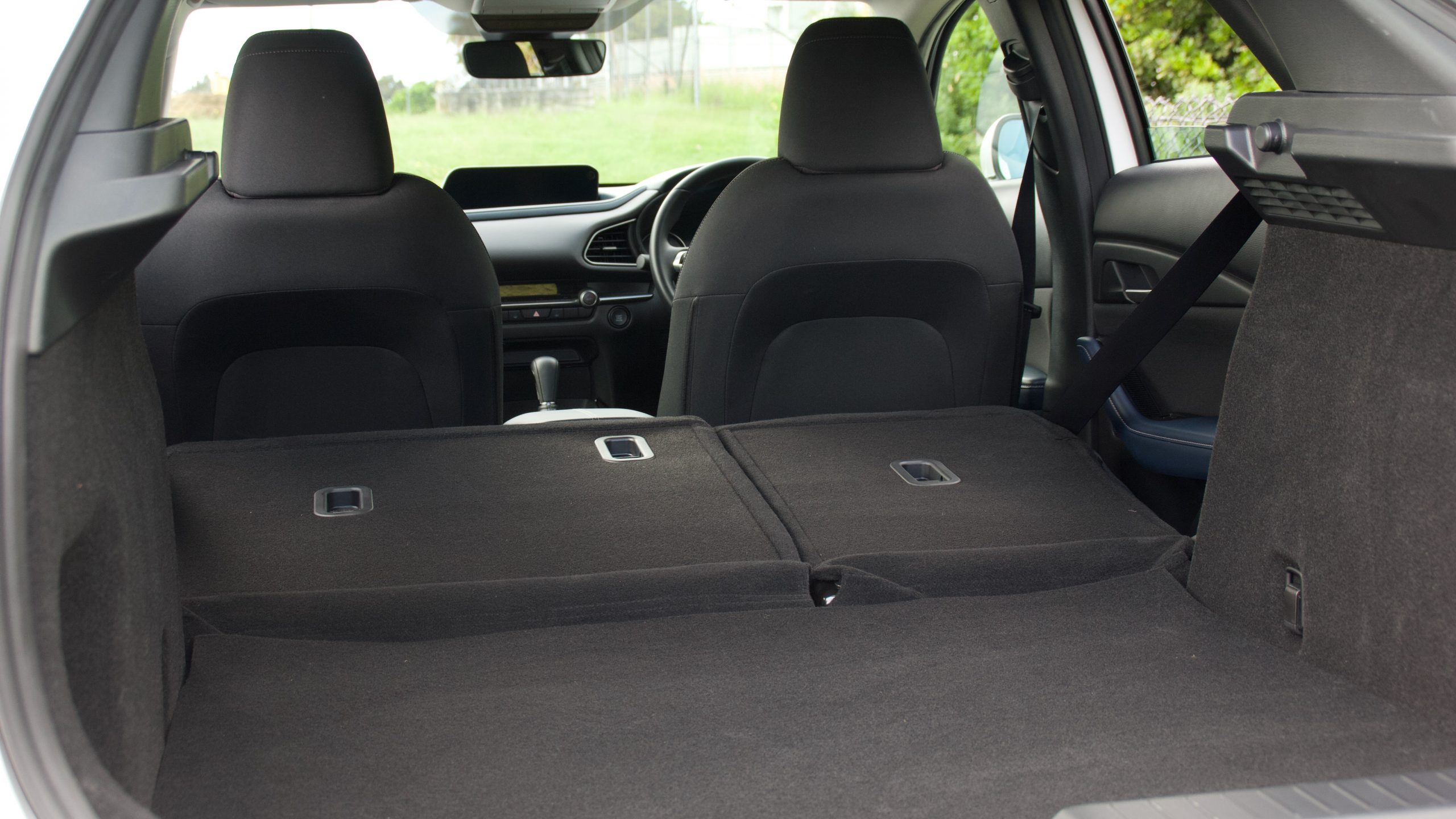
The boot of the CX-30 is reasonable at 317-litres, though it appears larger in person and a Seltos’ boot in particular is larger at 433L. The rear seats fold almost flat and although Mazda doesn’t give a figure, overseas reports suggest that it’s around 1,250L in total. There also is some storage on either side of the floor but nothing in the way of hooks, nets, or a 12V socket, unfortunately. Little touches like this would greatly improve the practicality of the CX-30 because currently, the boot is just a big box with no way to secure loose items. Underneath the boot floor is a space-saver spare wheel.
Service & Warranty: 8/10
Like other Mazda products, the 2022 Mazda CX-30 G20e Evolve is equipped with a five-year/unlimited km warranty with five years of roadside assistance. The CX-30’s service intervals are once-yearly/every 10,000km, which falls up short against the 15,000km service intervals of rivals and adds cost for those travelling big distances. Five years/50,000km of servicing costs $2,185 ($437 per year) – those doing more distance will be paying more.
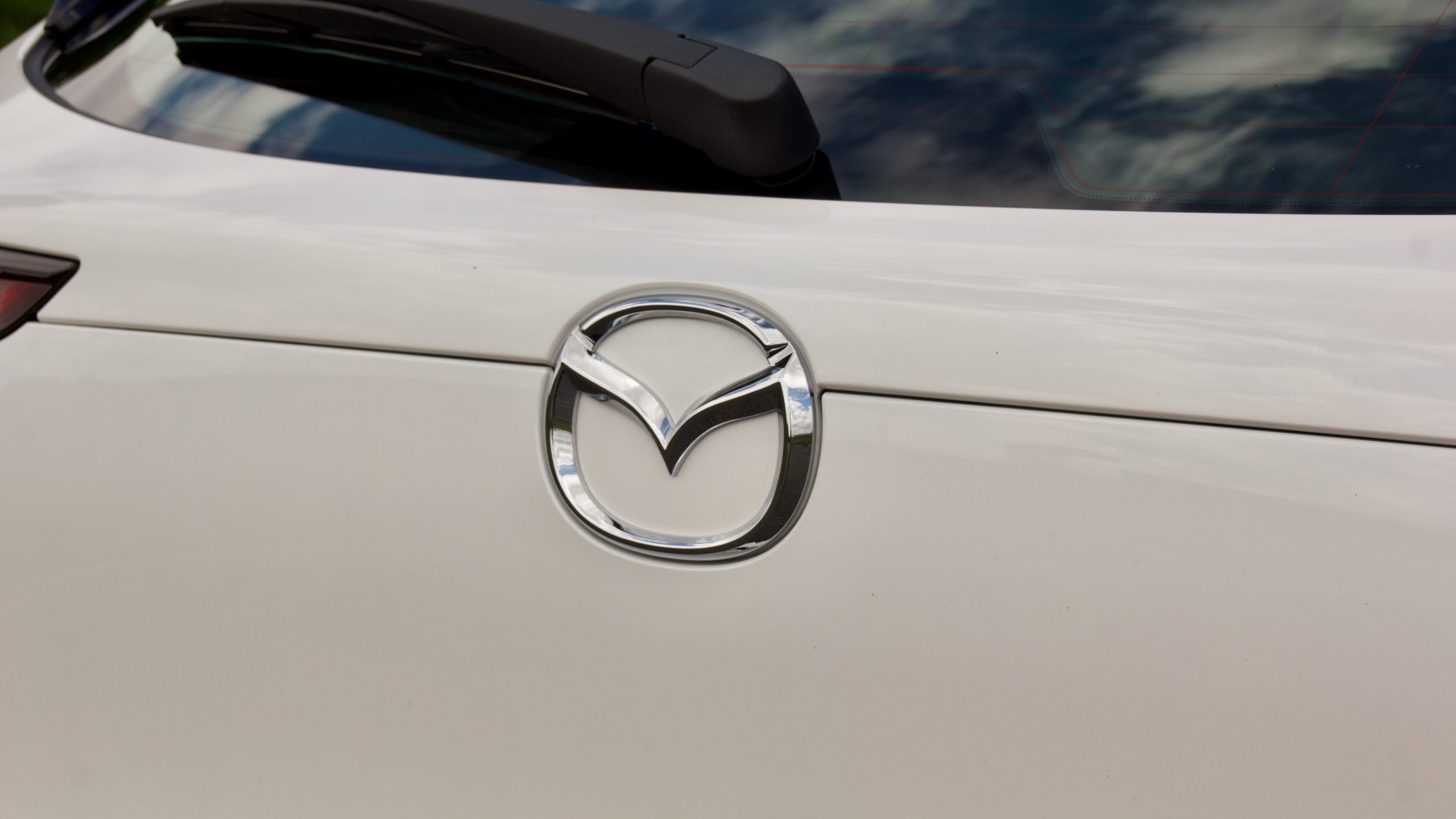
The Kia Seltos comes with a seven-year/unlimited km warranty with up to eight years in total of roadside assistance, while five years/75,000km of servicing costs $1,914 ($382 per service). Both the Hyundai Kona and Toyota C-HR come with the same five year/unlimited km warranty as the Mazda, though Hyundai only includes roadside assistance after the first 12 months if you service it at a Hyundai dealership and Toyota includes none. Five years/75,000km of servicing the Kona costs $1,595 ($319 per service) and servicing the C-HR costs $1,100 (just $220 per service).
The 2022 Mazda CX-30 G20e Evolve Mild-Hybrid DiscoverAuto Rating: 8.2/10
Is the 2022 Mazda CX-30 G20e Evolve mild hybrid still a small SUV to test drive? Undoubtedly yes, because it features a long list of equipment, a luxurious interior with excellent quality materials, keen driving dynamics and sultry styling that Australians seem to love. But which CX-30 you should consider is what has us confused, yet again.
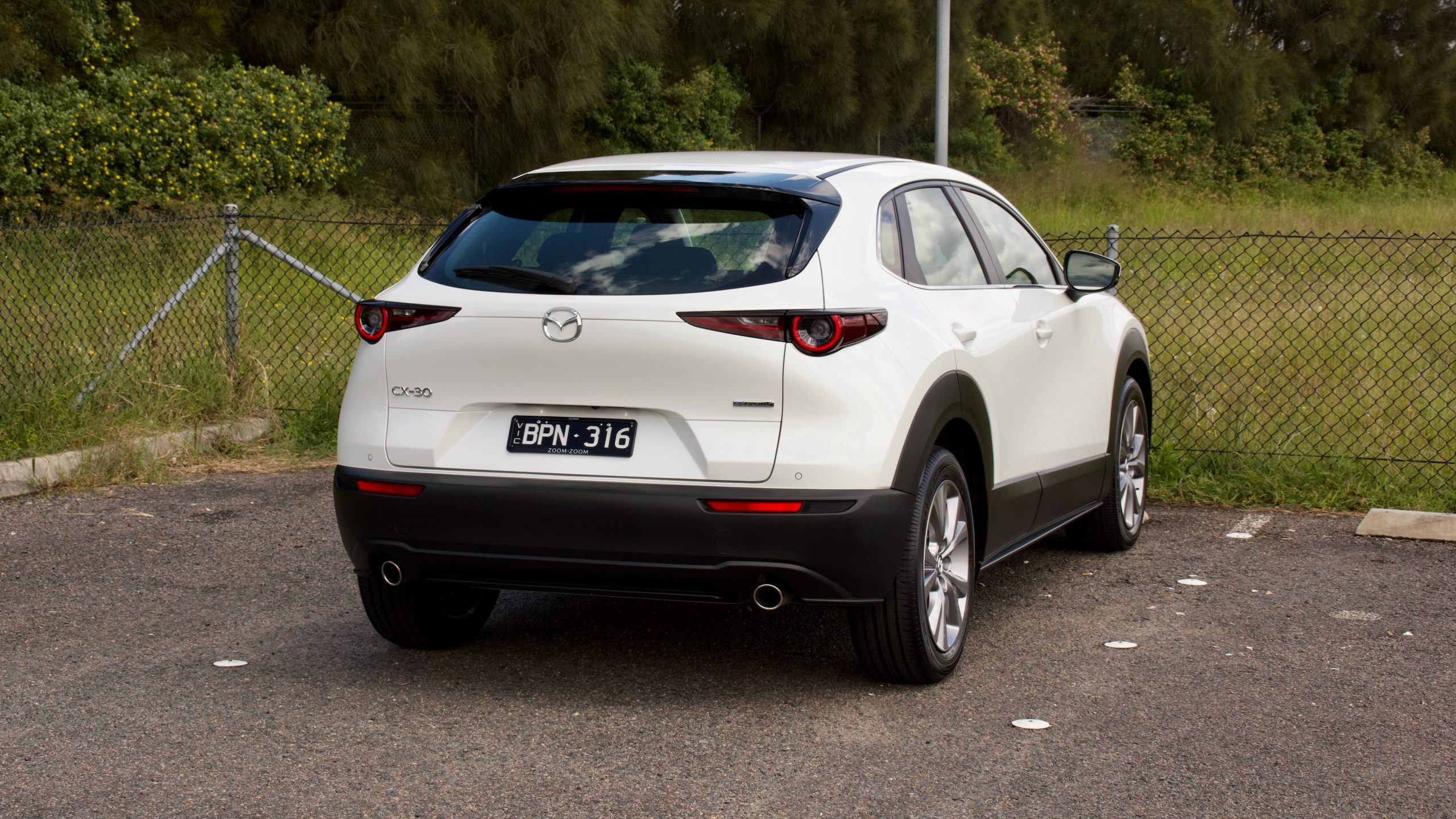
Put simply, we think the mild hybrid tech of this G20e Evolve should be standard at least on other Evolve models. It adds a subtle but noticeable difference to the driving experience and while fuel economy was nothing special in our experience, it was better than what competitors offer. The CX-30’s lack of rear practicality is a touch annoying as well, as it could be improved, and its service costs can get somewhat expensive. But overall, we think the CX-30 is a pretty good small SUV, especially for buyers that really enjoy driving.
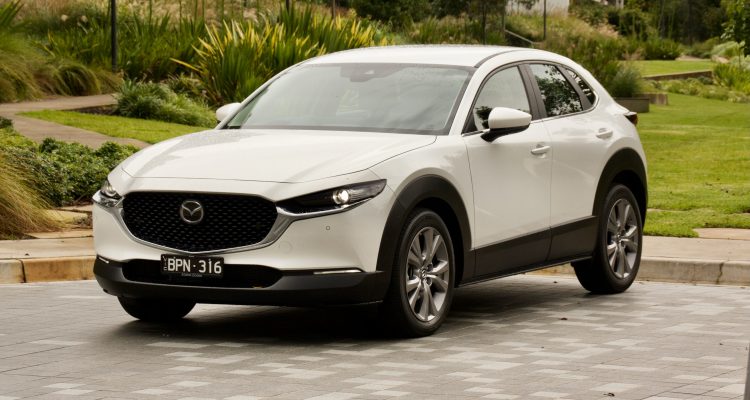
Leave a Reply